- Experience Guide (sv, dk, no, eng)
- Corporate (in Swedish)
- Press & Media
- Travel Trade
- Destinations
- Northern Sweden
Swedish Lapland
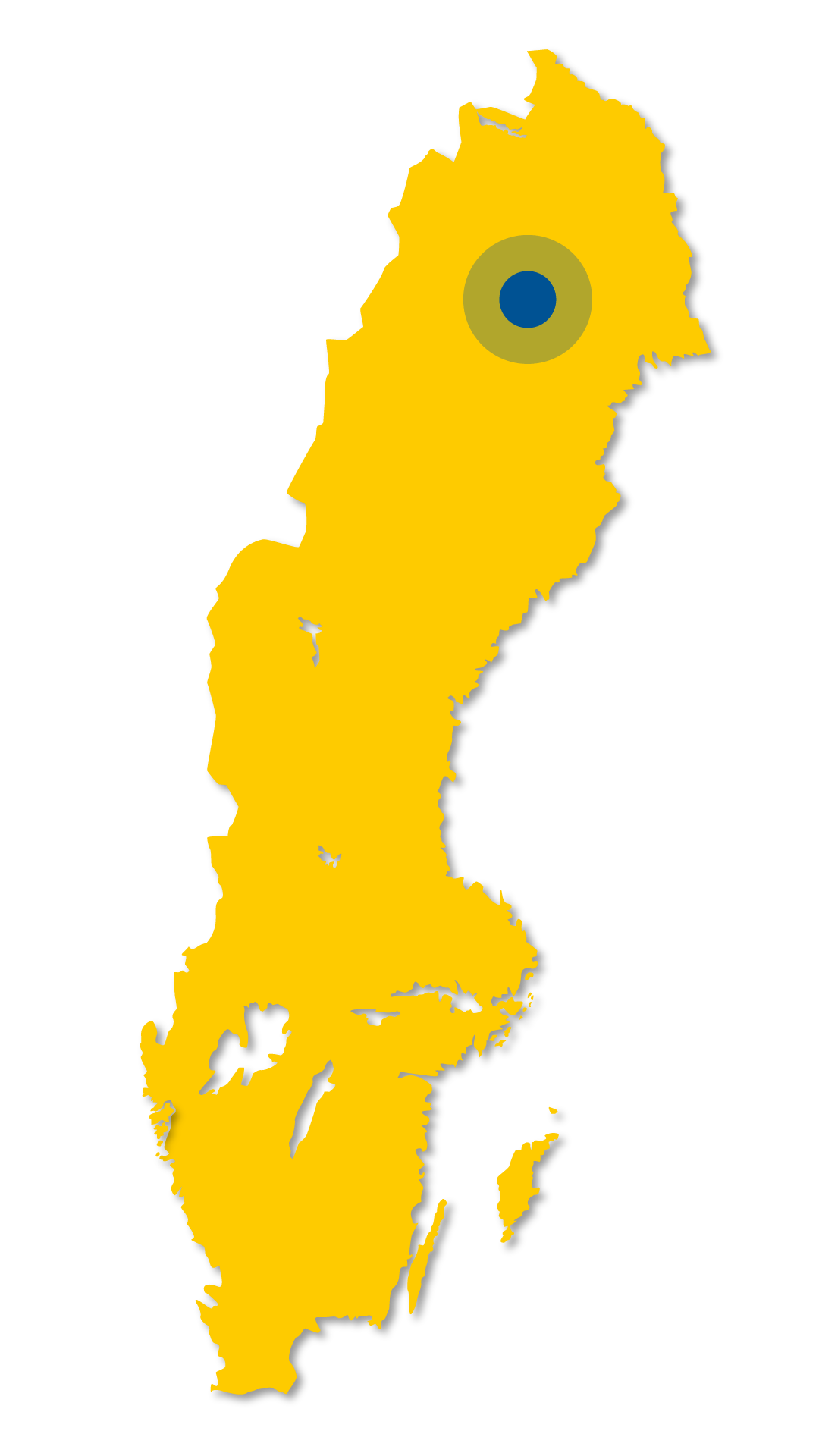

Swedish Lapland – a culture-rich natural wonderland
A visit to Swedish Lapland will open up a unique world, combining vast expanses of nature, authentic Sámi culture and culinary specialities. Depending on which season you come, you'll have completely different experiences – but all of them will be memorable.
- In some parts of Swedish Lapland, there are more huskies than people.
- There are some 300 words in Sámi dialects to describe different types of snow.
- Swedish Lapland is the only Swedish region that borders two other countries – Norway and Finland.
- Swedish Lapland boasts three UNESCO World Heritage Sites : the cultural and natural landscape of Laponia, Gammelstad Church Town in Luleå and Struve Geodetic Arc.
Swedish Lapland is a region unlike any other. The land of the Midnight Sun and the Northern Lights is home to mountains, forests, marshes, wild rivers and archipelagos. Stretching from Skellefteå in the province of Västerbotten to the northernmost tip of Sweden, this arctic territory covers a quarter of the country. The sheer size and variety of terrain give the outdoor enthusiast endless options, from hiking and fishing to dog sledding and skiing.
There are also plenty of cultural experiences to be had and world-class accommodations that harness its natural surroundings – the most famous examples being Icehotel , Treehotel and Arctic Bath .
The northernmost parts of Sweden, Norway, Finland and Russia are also known as Sápmi, the land of the indigenous population. The Sámi people have lived here for thousands of years. The magnificent nature of Swedish Lapland may seem untouched, but for generations, it’s been lovingly used by Sámis, who divide the year into eight seasons . As a mark of respect for nature, they’ve named every valley and mountain peak in the area.
Reindeer, Swedish Lapland
The indigenous Sámi people have been herding reindeer in Swedish Lapland for thousands of years.
Photo : Tobias Hägg/Airpixels/Swedish Lapland
Cabins at Geunja in Vindelfjällen
Photo : Swedish Lapland
Sámi folk costume
Photo : Lola Akinmade Åkerström/imagebank.sweden.se
Reindeer meat
Photo : Pernilla Ahlsén/imagebank.sweden.se
Sámi bracelet
Experience genuine Sámi culture
Immerse yourself in Sámi culture courtesy of authentic experiences such as Geunja Sámi Eco Lodge , peacefully located by a lake in Ammarnäs. Run by the Vinka family, you’ll learn about Sami cultural heritage and traditions, as well as the nature and animals with which the Sami people are so intrinsically connected. This off-grid adventure will have you enjoying guided boat trips, hikes in the nearby mountains and perhaps a spot of fishing. Traditional dishes such as reindeer stew and chanterelle soup are cooked over an open fire and you’ll sleep in either a Sami-designed, grass-roofed log cabin or a traditional goathie hut.
The Sámi community could teach the rest of the world a thing or two about sustainability. When it comes to their reindeer, very little goes to waste. The meat is a key food source, and the hide is used for rugs. The leather is fashioned by hand into footwear and accessories, while the horn is used for buttons and various objects. Some of these objects are available to buy, such as decorative bags featuring pewter embroidery and felted wool panels. To ensure you buy an authentic Sámi craft, look for the Sámi certification mark. It includes two labels, Sámi Duodji and Sámi Made, and they confirm that the products are genuine Sámi crafts or products made by Sámi people. Read more about Sámi handicrafts and where to buy them .
When to visit Swedish Lapland?
- Spring: Early spring is considered the best season among many locals. The sun returns and it’s the best time to go skiing, go on a snowmobile tour or enjoy an outdoor ‘fika’ in the snow. In late Spring, the reindeer give birth to their calves and it’s low season in the region, ideal for those travelling on a budget.
- Summer: June is the month of the Midnight Sun, but Swedish Lapland offers a midnight light pretty much the whole summer that will amaze visitors that haven’t experienced anything like it before. Enjoy outdoor activities like hiking, biking or swimming around the clock.
- Autumn: Early autumn is the ideal season for hiking in Swedish Lapland. The mosquitos are fewer and nature shifts into a colourful pantry full of mushrooms and berries. Autumn is also hunting season.
- Winter: The snow lightens up the short days and the spellbinding Northern Lights paint the sky green, pink and purple. Winter is the longest season in Swedish Lapland and the high season for international visitors. Dress warmly, and the possibilities for genuinely memorable outdoor activities are endless.
Northern lights, Swedish Lapland
The most common colour of the Northern Lights is green, but it can also change to pink and purple.
Photo : Peter RosénSwedish Lapland
Midnight sun, Swedish Lapland
Photo : Peter Rosén/Swedish Lapland
Skiing, Riksgränsen
Photo : Lapland resorts
Dog sledding adventure
Photo : Anna Öhlund/imagebank.sweden.se
Team of huskies
Photo : Asaf Kliger/imagebank.sweden.se
Sarek National Park, Laponia
Photo : Anders Ekholm/Folio/imagebank.sweden.se
Natural light shows and outdoor adventures
The Northern Lights are a draw for locals and international visitors alike. Aurora Sky Station in Abisko is considered one of the best places in the world to experience this natural light show. The electromagnetic interplay between the sun and the earth that creates this phenomenon happens all year round, but you’ll only be able to see it during the darker months – August through to April. Come May, the Northern Lights give way to the Midnight Sun , defined as the consecutive 24 hours of sunlight you get north of the Arctic Circle between May and mid-July.
Take advantage of the endless days to explore the varied landscape by setting off on a hike or foraging excursion. Essense of Lapland – headed by food creator and culture guide Eva Gunnare, offers educational guided tours across the marshes, forest and mountains near her beautiful hometown Jokkmokk.
The region is a dream for fly fishing enthusiasts, who take full advantage of its thousands of streams and lakes, as well as a 1,500 kilometres long coastline. Add to that four national rivers, and you have endless scope to find your ideal fishing spot. The Torne River is one of the most productive salmon rivers in the world – up to 100,000 fish ascend the water every summer on their way to their spawning grounds. Other fish you’re likely to catch are pike, trout and whitefish.
Swedish Lapland is a winter paradise with a long skiing season. At the famous Riksgränsen ski resort you can hit the slopes as late as Midsummer. For something a little different, Aurora Safari Camp , Sweden’s first-ever wintertime glamping site, offers hot air balloon rides by night or day, allowing you to admire snow-covered treetops and the Råne River Valley from high above. Aurora Safari Camp also offers many other arctic activities, including snowmobile tours, cross-country skiing and dog sledding. Svedjekojan Husky Farm , a 25-minute drive from Piteå, is another company offering excellent dog sledding excursions.
The UNESCO World Heritage Site of Laponia , with its vast expanses of nature, is a true haven for adventurers looking to get away from it all.
Huuva Hideaway
Huuva Hideaway in Liehittäjä, Swedish Lapland, offers a range of dining experiences.
Photo : Swedish Lapland/imagebank.sweden.se
Kalix Caviar
Photo : Tina Stafrén/imagebank.sweden.se
The Veranda at Icehotel, Jukkasjärvi
Photo : Asaf Kliger/ Ice Hotel
Gammelstad Church Town, Luleå
Photo : Ted Logart/Swedish Lapland
Swedish Lapland’s culinary culture and top restaurants
The Sámi culinary tradition greatly influences Swedish Lapland’s food culture. Local produce takes centre stage, whether it’s cultivated or foraged in the wild. Reindeer is an important part of the diet and is sometimes smoked in the traditional way of preserving meat. Elk meat is another staple source of protein, while fish lovers can tuck into locally caught Arctic char and whitefish.
Kalix Caviar is another must-try delicacy. It’s the first Swedish food product to have received Protected Designation of Origin (PDO) status by the EU, joining the ranks of Champagne, Parma Ham and Stilton Cheese. Swedish Lapland has plenty of cheese, too, much of which is produced at small-scale dairy farms, such as Svedjan Ost .
The unique flavours of Swedish Lapland can be sampled at restaurants across the region. The Veranda at Icehotel serves up a 12-course tasting menu. Luleå's Restaurang CG has plenty of meat dishes to choose from, as well as some fish-based ones, including Kalix Caviar. Meanwhile, Huuva Hideaway , a retreat located in the small village of Liehittäjä, offers a range of experience-driven dining experiences, all in keeping with Sámi tradition, and always with an educational twist.
Swedish Lapland is a generous chunk of Sweden with a distinctive, multifaceted identity – one that’s likely to linger long after you’ve left.
Practical information before your trip to Swedish Lapland
The convenient night train (operated by SJ ) departs from Malmö in southern Sweden, Gothenburg in the southwest, as well as Stockholm, offering cabins for a good night’s sleep. Inlandsbanan , another train service, runs through the interior of Swedish Lapland during summer.
Drivers will find a well-developed road network – the main roads are E4, E10 and E45.
Flights run from Stockholm Arlanda Airport to the Swedish Lapland airports of Arvidsjaur, Gällivare, Kiruna, Luleå and Skellefteå.
As Swedish Lapland covers a quarter of the country, distances between locations can be long.
A car will be useful , although trains (operated by SJ ) run between some of the main locations and towns, including Luleå, Kiruna and Riksgränsen.
There are also bus operators, and once you’ve arrived at your chosen destination, you’ll get around villages and towns easily on foot or by bicycle.
You’ll find an impressive range of high-end hotels in Swedish Lapland.
The famous Icehotel in Jukkasjärvi is the first ice hotel in the world and a year-round destination.
Treehotel in Harads, with its architect-designed treetop cabins, put Sweden on the map when it comes to unique accommodations.
Arctic Bath – an open-air hotel floating on the Luleå River – is situated close to Treehotel. Its unique spa concept and highly acclaimed restaurant draw guests from all over the world.
Lapland View Lodge in Övertorneå is located on top of a mountain and offers chalets with breathtaking views over the Torne River and the surrounding treetops.
Niehku Mountain Villa , in Riksgränsen, has attracted much attention and received a UNESCO Prix Versaille in the best hotel interior category in 2019.
The contemporary Kust Hotell & Spa in Piteå, meanwhile, has more than 90 rooms and suites, a spa and a skytop bar.
At Sápmi Nature Camp , situated in Lapoina, you'll get an off-grid glamping experience and the chance to learn more about the sustainable Sámi way of life.
The Swedish Tourist Association (STF) also has several youth hostels and mountain cabins in the region.
Swedish Lapland provides endless outdoor activities, from skiing and dogsledding to summer adventures across the water, such as long distance canoeing and white water rafting. Both can be experienced courtesy of the four national rivers flowing through Swedish Lapland.
The region is also home to Sweden’s highest mountain, Kebnekaise.
An ideal place to admire the Northern Lights is Aurora Sky Station in Abisko.
Cultural experiences include Gammelstad Church Town – a UNESCO World Heritage Site near Luleå. This wooden town, with its 15th-century church, was originally built to provide accommodation for worshippers having travelled from afar.
Kids will find Swedish Lapland fascinating. The deep snow and frozen lakes are enchanting, and so too are the Northern Lights, mountaintop views and rich wildlife. Take them on a birdwatching adventure – you might catch a hoard of reindeer in the distance, too.
As for organised activities, dogsledding is a hit with children. Pinetree Lodge in the Torne Valley village of Särkimukka has over 150 huskies and a range of adventures to choose from.
If snow is the draw, Icehotel 365 offers an experience based on snow and ice 365 days a year.
Suite at Icehotel, Jukkasjärvi
Art suite room designed by Edith Van de Wetering & Wilfred Stijger.
Photo : Asaf Kliger © ICEHOTEL
Treehotel in Harads, Swedish Lapland
Arctic Bath in Harads, Swedish Lapland
Photo : Håkan Stenlund/Swedish Lapland
Lapland View Lodge
Photo : Michael Törnkvist
Niehku Mountain Villa
Photo : Philipp Herfort Photography/Niehku
Sapmi Nature Camp
Photo : Lennart Pittja/Sápmi Nature/Visit Sweden
Icehotel – the coolest hotel in the world
How to capture the elusive northern lights, design & architecture design & architecture, top 6 design places to visit in northern sweden, nature & outdoors nature & outdoors, sweden – a paradise for cycling, when and where to see the magical northern lights in sweden, the king's trail has something for everyone, top 8 lake vacations in sweden – from wild swimming to kayak adventures, true adventure in laponia, kayaking and canoe adventures in sweden, when and where to see the spectacular midnight sun, culture, history and art culture, history and art, discover sweden's traditional sámi culture and way of life, sámi handicraft, eat & drink eat & drink, the regional flavours of sweden, sights & landmarks sights & landmarks, the gammelstad church village in luleå.

- Stories from Swedish Lapland
- Getting here
- Care for the Arctic
Follow us on social medias
Things to do

A TASTE OF THE ARCTIC

SUMMER IN THE ARCTIC

ARCTIC LIFESTYLE

THE NORTHERN LIGHTS

ICONIC PLACES

FLY FISHING HEAVEN

ARCTIC WELLNESS

LET'S GO HIKING

CLOSE TO NATURE

THE LOVE FOR SKIING

WINTER IN THE ARCTIC
- Meetings & Incentives
- Press & media
- Cookie Policy
- Covid-19: Information for Swedish Lapland travellers

A SWEDISH LAPLAND STORY
This is sápmi, the land of the sámi, photo: håkan stenlund, text: linnea eriksson.
There are indigenous peoples living in 90 countries across the globe, and the Sámi are the indigenous people living in the north of mainland Europe. The land of Sápmi covers parts of Norway, Sweden, Finland and Russia, but the Sámi have their own language, culture and customs.
You might know them as the reindeer-herding people of the north that wear colourful traditional clothing, but the Sámi people and culture is so much more than that. Sápmi, the land of the Sámi, holds a richness of tradition, religion, knowledge and culture that is similar to other indigenous people – to some extent – but at the same time very unique.
Eight seasons
If you live your life close to nature, you will eventually recognize that the four seasons of the calendar aren’t enough. That the twelve months named after ancient gods and royalties from the old Roman Empire has nothing to do with you. Hence the Sámi people have eight seasons because there is always a season in-between seasons. At the end of winter, dálvve , the sun, beávie , has returned and the days grow longer and warmer. Spring isn’t far away, but due to the cold nights, the snow will still stay for a while. This is spring-winter, gidádálvve , and probably the best time for many of us living up north. Then comes May – a time that the Sámi knows by the name of Miessemánnu , meaning the time when the calves are born.
Everything in the lives of the Sámi people is revolved around the reindeer, and the eight seasons is also a way of describing the migration of the animal, from winter grazing land to summer pastures. After gidádálvve comes spring gidá , followed by gidágiesse , and giesse , meaning spring-summer and summer. But everything eventually comes to an end, and the summer heat is followed by the fall, the time called tjaktjagiesse , a time for harvest and foraging before tjaktja takes hold, and you have to get everything ready before tjaktjadálvve , and then dálvve will appear. Because, as the saying up here goes, every new day is one day closer to next winter.
Sápmi is a nation without borders but with a language, history and culture that is common for the whole area. The reindeer is intertwined with man and nature, and the Sámi culture has its roots very far back in time. The word ‘Sámi’ is derived from ‘Sápmi’, which is the name of the geographic area where the Sámi traditionally had their settlements. It is comprised of the northern parts of Norway, Sweden, Finland and Russia. Sápmi has its own flag, in the traditional colours red, blue, yellow and green. If you ever see a map of Sápmi, it might look different depending on when it was made. Especially the southern border has varied throughout the years, and there is archaeological evidence indicating that the Sámi once ventured and lived as far south as Västergötland in Sweden.
Sápmi is the land and the people, the nature and the reindeer, the animals and the light. The midnight sun and the northern lights . The heat from the fire on a sparkling winter’s day and the coolness of a mountain stream after a long day’s hike. Sápmi is the food and the produce. But also human rights and Sámi names. Duodji (handicraft), fishing, and Sámi tourism. The flag and the Sámi colours. The wanderlust and respect for all we see around us. Young and old. And everything in between.
A hymn to home
Lennart Pittja runs the awarded Sápmi Nature Camp in the heart of Sápmi. In summer he spends his time on a small island high up in the mountains as generations before him.
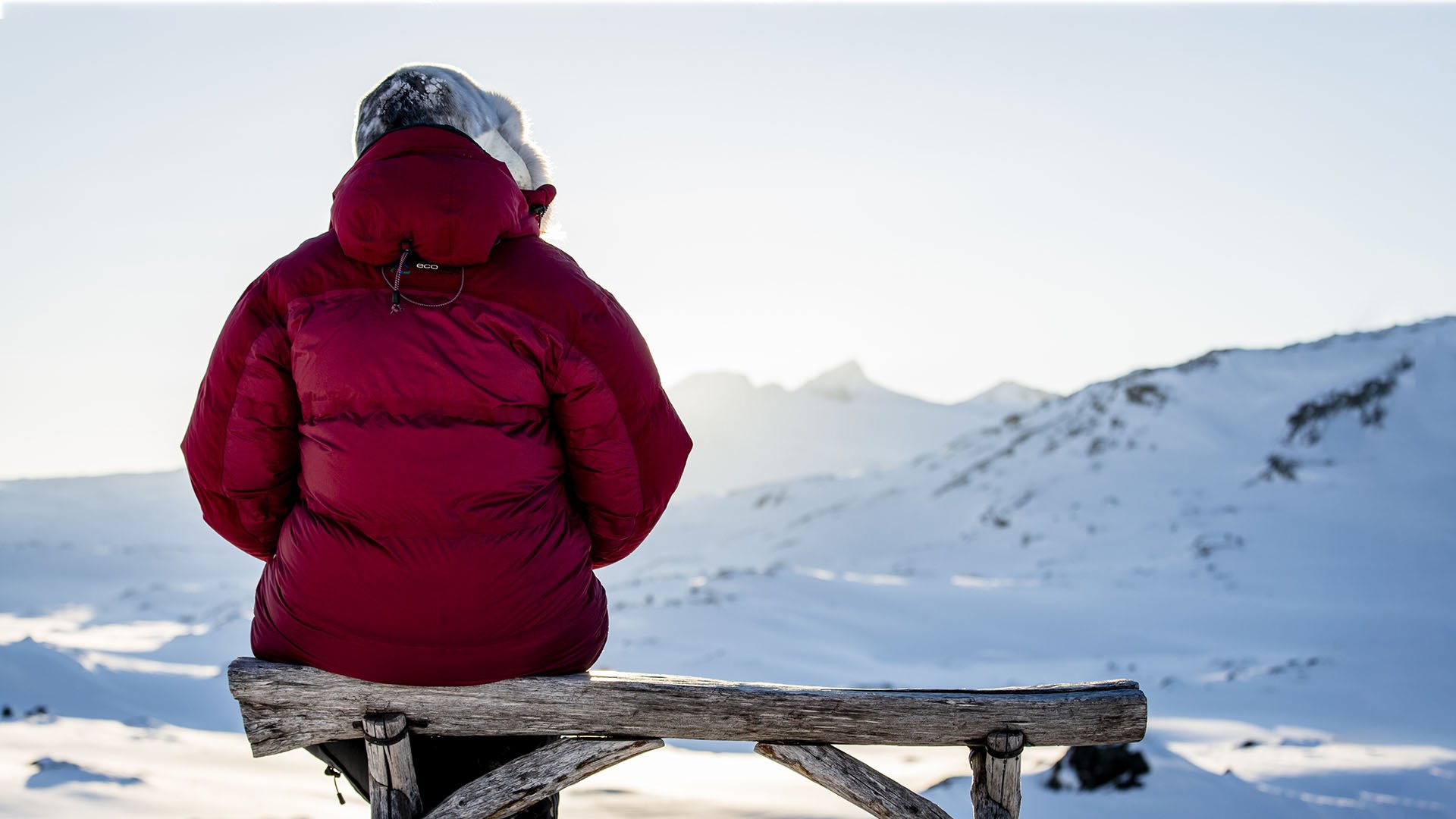
A nomad people
If you travel through Sápmi or Swedish Lapland, you might come across the Swedish term sameby , meaning ‘Sámi village’. The term is a bit misleading because you can easily interpret it as special villages exist where the Sámi live. A sameby is run as an economical and administrative association that organizes reindeer husbandry in a certain geographical area for the benefit of its members. The lands are used for, among other things, reindeer herding, hunting and fishing. There are 51 samebyar in Sweden.
The Sámi are a nomad people who have followed the reindeer across the vast pasture area from mountain to coast. Today, the nomadic lifestyle is history, and the Sámi are resident, but the reindeer still migrate from their winter habitat to the summer pasture area. Year after year, as they have done for centuries.
Boazu – the reindeer
The reindeer boazu holds a very special place in Sápmi. It’s an animal totally adapted to the arctic. Depending on the season, the bottom of their retina changes colour, from blue to yellow to blue again. Hence the reindeer change the way they see. In the winter they are more adapted to seeing contrasts, but in the summer they are more sensitive to colours. Throughout history, the reindeer has provided food and clothing for the Sámi and has also been useful in trading with other people. It started with wild reindeer being hunted and evolved into herding during thousands of years in coexistence with the animals and with nature. Even today, nature controls the rhythm of reindeer herding, since the animals roam freely over vast non-enclosed areas all year round.
There are approximately 250 000–280 000 reindeers in Sweden, varying from year to year. Both male and female reindeer grow antlers, which are shed once a year. While the male reindeer shed its big horns in early fall, so they’ll be able to dig down deep in the snow for food in the winter, the females keep their smaller horns. That way they can fight off the bigger (horn-less) bulls so their calves will get food. Reindeer fur is very thick and dense, which isolates well during the cold winter months. Its hooves are big, which enables them to run on top of the snow and dig through the snow for lichen – their food of choice. Once a year, in May, the female reindeer goes up in the mountains to give birth. The calf stays with her until next year when it is time for the mother to give birth to a new calf.
The Chef and the Herder
Meet reindeer herder Johan and the chef Staffan in one of the most exciting food collaborations we have seen in years.
Gákti – the formal dress of the Sámi
You have probably seen Sámi people in pictures or on film, wearing their traditional colourful clothing. This is called gákti and is the formal dress for occasions such as weddings and funerals but also in festive contexts. Originally, the gákti was made mostly from materials provided by the reindeer and other animals. Fur, leather and tendons were used to make both clothing and shoes and combined with a cloth and wool ribbons bought from merchants. Traditional materials are still widely used, but even more modern materials such as silk or velvet have become popular.
The appearance of the gákti is different depending on what area you come from. It can also differ depending on gender, or sometimes the wearer’s age or civil state. Just like any other clothes, the appearance of the gákti varies slightly depending on the current trends, and the seamstress can also give it a certain individuality. The traditional gákti has a belt, shoes, shoe bands and a scarf or chest cloth combined with jewellery, trousers and a hat. The jewellery was traditionally a status symbol. Having a lot of it, especially if it were made from silver, meant that things were going well for you. Both Sámi men and women wear jewellery.
Duodji – Sámi art and handicraft
The reindeer has many useful purposes to the Sámi people. In addition to providing food and clothing, the antlers, leather, and tendons from the reindeer are used in Sámi handicraft. To the Sámi people, the reindeer has always been sacred and beloved. And what you love, you also care about. So everything from the reindeer would be taken care of, the hooves boiled until they made a perfect glue. The aorta was taken out and boiled, looking like one long spaghetti. Today, skilled Sámi chefs deep fry it – and it tastes just like calamari. This is not only a question of the nose to tail eating, but more like nose to tail living. Nothing gets wasted.
The Sámi word for handicraft – duodji – refers to creating with your hands from different materials. The Sámi have always created with their hands, and duodji plays an integral part in Sámi tradition and identity. Whenever something was needed in daily life, one used whatever was available – leather, tendons, roots, birch-bark or antlers – and made it by hand. The art of Sámi handicraft has been passed on for generations; the kids learn from seeing the parents and grandparents always at work with their hands. This type of collective knowledge and tradition is known to the Sámi as árbediehtu , and it is almost as if the entire Sámi society carries it with them and share it to the next generation. Without really knowing it, the kids inherit it until the Sámi culture is a natural part of who they are. Today Sámi duodji , even though influenced by modern lifestyle and other cultures, still needs to come with a certain type of values and style to be called duodji .
Anyone who wants to learn more about Sápmi should visit some of the Sámi companies found in Swedish Lapland – they are all talented storytellers and are happy to share their knowledge.
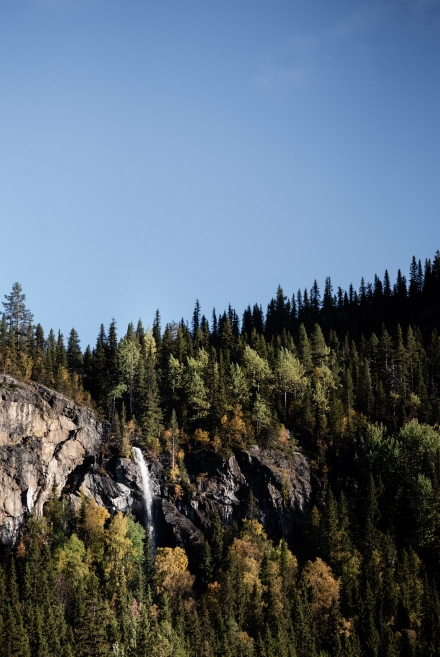
5 companies offering Sámi experiences
Geunja sámi eco lodge.
A visit at Geunja , the unblemished country, provides a deeper understanding of the Sami culture and an insight into the traditional way of life.
Nutti Sámi Siida
For over 20 years Nils Torbjörn Nutti has invited visitors in Jukkasjärvi to the Márkanbáiki to tell about Sámi culture and offer Sámi activities.
Båtsuoj Sámi Center
Take part of the culture by visiting the Sámi village at Båtsouj. Meet the reindeer and see the traditional settlement. You can also spend the night in a traditional house.
Sápmi Nature
Award-winning for his eco-tourism business and acclaimed in the world media. At Sápmi Nature Camp Lennart Pittja shares his personal Sámi history.
Silba Siida
Visit the young reindeer herders Anna and Erik and experience traditional Sámi food, storytelling around the fire, and wintertime you can feed the reindeer.
A life in harmony with nature
Many Sámi didn’t settle down in conventional houses until the mid-20th century. Instead, they followed the reindeer as nomads. Today, people have more stationary settlements, even at the summer grazing grounds in the mountains. In the old days the lávvu – a Sámi tipi – was the main dwelling which was deconstructed every time the people moved to a different location. But the Sámi also built similarly shaped wood constructions that were left over the years called goahti . These buildings were always constructed with similar interior and design, which also gives us a glimpse of the view on life in Sápmi. The lávvu , as well as the goahti , was always turned so that the entrance would face east, to greet the sun – beaivi .
Beaivi is the sun but also a goddess. For the female Sámi, some of the goddesses were more important than others, and they were all connected to the goahti or lávvu . The mother goddess, Máttaráhkká lived under the goahti or lávvu while her daughters Sárahkká , Uksáhkká and Juoksáhkka also had their own tasks and designated places there. Sárahkká was the goddess of birth, for both reindeer calves and human babies. Uksáhkká was the gatekeeper at the door to the dwelling, protecting new-borns and people who passed in and out the door. Juoksáhkka was the god who decided whether it would be a boy or a girl during the pregnancy. And another goddess of the home was Påssioakka , who protected the kitchen area and she was also the goddess to please if you wanted a successful hunt. Hence a God to stay on the safe side with, if you live your life close to nature.
Share the story
Jokkmokk’s market
On the first weekend in February, every year since 1606, Jokkmokk's market is held. Apart from world-class Sámi art, cul...
Stories told with names
Many towns, mountains, rivers in Swedish Lapland bear the names given to them by the Sámi people, usually describing the...
Our home, Swedish Lapland, has been formed by the Ice Age, the seasons and the reindeer. And we, too, have lived our liv...
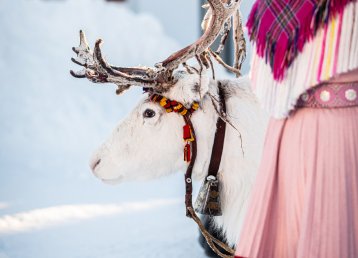
Kiruna Airport closed
During the period of 15-29th July Kiruna Airport will be closed. We help you find alternative travel ways. Read more.
- Things to do
- Destinations
- Plan your trip
- This is Kiruna
- LKAB’s Visitor Centre
- About Kiruna Lappland
- Kiruna Lappland Tourist Center
Sápmi – the Land of the Sámi
Kiruna is a part of sápmi and has been home to Sámi for many generations. The Sámi people are one of the world’s indigenous peoples, and for millennia they’ve lived close to nature. Although the Sámi lifestyle has developed over the years, their traditions and culture are still very much alive.
In the Kiruna region, several cultures meet. The dominant Sámi language here is Northern Sámi and many Sámi work hard to keep the culture alive and visible in the community. The Swedish name Kiruna is derived from the Sámi word “Giron”, which means “grouse”. Sámi place names explain Sámi history and can be viewed as pieces in the puzzle of an area. They’re often linked with the appearance of the terrain and the value of the location in terms of reindeer husbandry and Sámi subsistence. In Kiruna there is a genuinely living Sámi culture.
The practice of reindeer herding is a strong carrier of cultural heritage but far from all Sámi have it as their main occupation. It is more common to help out at larger events such as the calf branding. The handicraft, Sámi duodji, is also an important part of Sami culture and it embodies a life in harmony with nature. Throughout Kiruna you will find many unique examples of Sami arts and crafts such as the Jukkasjärvi Church organ, decorated with reindeer antler and Sámi motifs.Visiting the region, you can experience and learn more about the Sámi culture through the Sámi companies and guides who work in the tourist industry.
The Indigenous Peoples of the World
The Sámi, one of the world’s indigenous peoples, used to live as hunters and fishermen in nomadic communities where they moved with the reindeer according to the seasons. Nowadays, Sami live in many places in villages and cities and work in all kinds of professions. Even though the Sámi way of life has developed along with the rest of society, their culture and traditions are still strongly present. There are eight Sámi communities in Kiruna. A Sámi community is an economic association and its members are Sámi who work with reindeer herding within the boundaries of the respective communities.
Sámi Communities in Kiruna: Mountain Sámi communities: Könkämä, Lainiovuoma, Saarivuoma, Talma, Gabna, Laevas, Girjas. Forest Sámi community: Vittangi.
/https%3A%2F%2Fkirunalapland.se%2Fwp-content%2Fuploads%2F2021%2F08%2Frenkalv-kiruna.jpg)
About reindeer management
/https%3A%2F%2Fkirunalapland.se%2Fwp-content%2Fuploads%2F2021%2F07%2Fkiruna-skyline2.jpg)
Our eight seasons
Get to know the sámi companies.
In Nikkaluokta, the Sámi family Sarri has been running tourist activities for several generations. They have a facility at the end of the road, not far from Kebnekaise. Although times have changed, genuine Sámi folk are still living with the family, and knowledge of and a feel for the local environment are important to them.
Nutti Sámi Siida is located in the old Sámi marketplace that gave rise to the village of Jukkasjärvi. You’ll find exhibitions here about Sámi culture and lifestyle, sales of genuine Sámi handicrafts, and if you’re feeling a bit peckish traditional lunches are sold at the fireside in a massive Sámi cot. There’s some unique cabin accommodation here too, with reindeer just around the corner and popular reindeer driving tours.
Giron Reindeer is a Sámi family business with an outstanding knowledge of Sámi culture. With them, you can enjoy genuine experiences involving animals and nature and gain an insight into the life of a reindeer herder. Learn how to lasso a reindeer, or tag along on a trip in a reindeer sleigh through forest and marsh, just as the Sámi people of the North have done for thousands of years.
Stig Allas at Allas Activity, works as a reindeer herder and guide and shares his experiences from the neighbourhood and the Sámi Culture with you. He offers snowmobile tours, fishing, and skiing.
Ofelas Islandshästar & Guideservice arrange Icelandic horseback riding tours in the mountains. If you are interested in animals, wildlife, nature and Sámi culture you have found the right place.
Scandinavian Sámi Photoadventures is a Sámi family company that takes you out to photograph Northern Light, Wildlife and Sámi culture. You borrow camera equipment and warm clothes from us and join our Sámi guides out in nature to do amazing photos to your own album.
Enoks in Láddjujávri is located at the foot of Kebnekaise, Sweden’s highest mountain. Enoks Restaurant, which serves food of the Sámi tradition, is inspired by the Sámi culture in terms of shape, colours and patterns. During the winter, snowmobile- and overnight tours to Láddjujávri are arranged. Summertime there is boat transfer across glacier lake Láddjujávri which shortens the hike to and from Kebnekaise.
Go to Lapland invites you to genuine experiences in the heart of Sápmi where you can become a reindeer herder for a day. You can participate in a reindeer race, ride a sleigh under the northern lights, feed the reindeer and eat good food.
N’light is a small company that works with small groups to give each individual guest a genuine experience of the animals and nature. Sámi reindeer herder Niklas Blind likes to talk about reindeer herding life, the ancient culture and Sámi traditions.
Book Sámi activities
Learn more about Sámi culture through genuine experiences
/https%3A%2F%2Fkirunalapland.se%2Fwp-content%2Fuploads%2F2021%2F05%2Frenskotarturen-gotolapland.jpg)
Reindeer herder tour
/https%3A%2F%2Fkirunalapland.se%2Fwp-content%2Fuploads%2F2022%2F02%2Faurora-photo-scandinavian-photoadv-anette-niia-1738.jpg)
Northern lights photo tour
/https%3A%2F%2Fkirunalapland.se%2Fwp-content%2Fuploads%2F2021%2F11%2Fmatlagning8800x533.jpg)
Traditional cooking in Sápmi
/https%3A%2F%2Fkirunalapland.se%2Fwp-content%2Fuploads%2F2022%2F02%2F1192-abisko-dinner-scandinavian-photoadventures-anette-niia.jpg)
Aurora tour with dinner in Abisko
/https%3A%2F%2Fkirunalapland.se%2Fwp-content%2Fuploads%2F2022%2F02%2Fsami-survivor-ylva-sarri-scandinavian-photoadv-1738.jpg)
Become a Sami survivor
/https%3A%2F%2Fkirunalapland.se%2Fwp-content%2Fuploads%2F2022%2F02%2Faurora-scanphotoadv-ylva-sarri.jpg)
Northern lights with Sami dinner
/https%3A%2F%2Fkirunalapland.se%2Fwp-content%2Fuploads%2F2022%2F10%2Fgiron-reindeer-vuojan.jpg)
Árbi Vuoján - Excursion with the Reindeer
/https%3A%2F%2Fkirunalapland.se%2Fwp-content%2Fuploads%2F2022%2F10%2Fgiron-reindeer-suohpan2.jpg)
Árbi Suohpan - Sami Experience & Reindeer
Miessemánnu, ratekjokk trail (7 days), sámi adventure day tour, biellugis trail (3/5 days), you might also be interested in.
/https%3A%2F%2Fkirunalapland.se%2Fwp-content%2Fuploads%2F2021%2F09%2Fmidnight-arctic1-1.jpg)
10 tips for May
/https%3A%2F%2Fkirunalapland.se%2Fwp-content%2Fuploads%2F2021%2F07%2Fvistasdalen2.jpg)
Boat ride and hiking in Visttasvággi
/https%3A%2F%2Fkirunalapland.se%2Fwp-content%2Fuploads%2F2021%2F08%2Fhusky-kiruna-dogsled1.jpg)
An arctic dogsledding adventure
/https%3A%2F%2Fkirunalapland.se%2Fwp-content%2Fuploads%2F2021%2F08%2Fvandrare-sommar-sko1.jpg)
Find your outdoors equipment here
/https%3A%2F%2Fkirunalapland.se%2Fwp-content%2Fuploads%2F2021%2F07%2Fnorrsken-peter-rosen.jpg)
Northern lights - Aurora Borealis
/https%3A%2F%2Fkirunalapland.se%2Fwp-content%2Fuploads%2F2021%2F08%2Fisfiske-var-kiruna.jpg)
Ice fishing - wellness on ice
/https%3A%2F%2Fkirunalapland.se%2Fwp-content%2Fuploads%2F2021%2F06%2Fnikkaluokta-foto-jessica-nilden.jpg)
Nikkaluokta
/https%3A%2F%2Fkirunalapland.se%2Fwp-content%2Fuploads%2F2021%2F06%2Fbjorkliden-host-lapporten-foto-jessica-nilden.jpg)
8 tips for a sustainable stay in Kiruna
Malmvägen 9B
SE-981 30 Kiruna

Sami open-air museum
Experience sápmi at the márkanbáiki open air museum.
Márkanbáiki is an easily accessible excursion destination in Jukkasjärvi for visitors from near and far who want to experience Sápmi with all their senses. Get up close to reindeer, stroll through the museum's exhibits and enjoy traditional Sami flavors with a modern twist at Café Sápmi. Bures boahtin Sápmái – Welcome to Sápmi!
Good to think about
If you want to bring home a souvenir from your stay, you can visit the handicraft shop where you will find unique products and nice gifts. There is only the best from the local Sámi song, duodji. Among other things, reindeer traps and horn designs, Sami silver jewelry and lasso lines.

Things to do nearby
Discover more in sweden.
National Geographic content straight to your inbox—sign up for our popular newsletters here
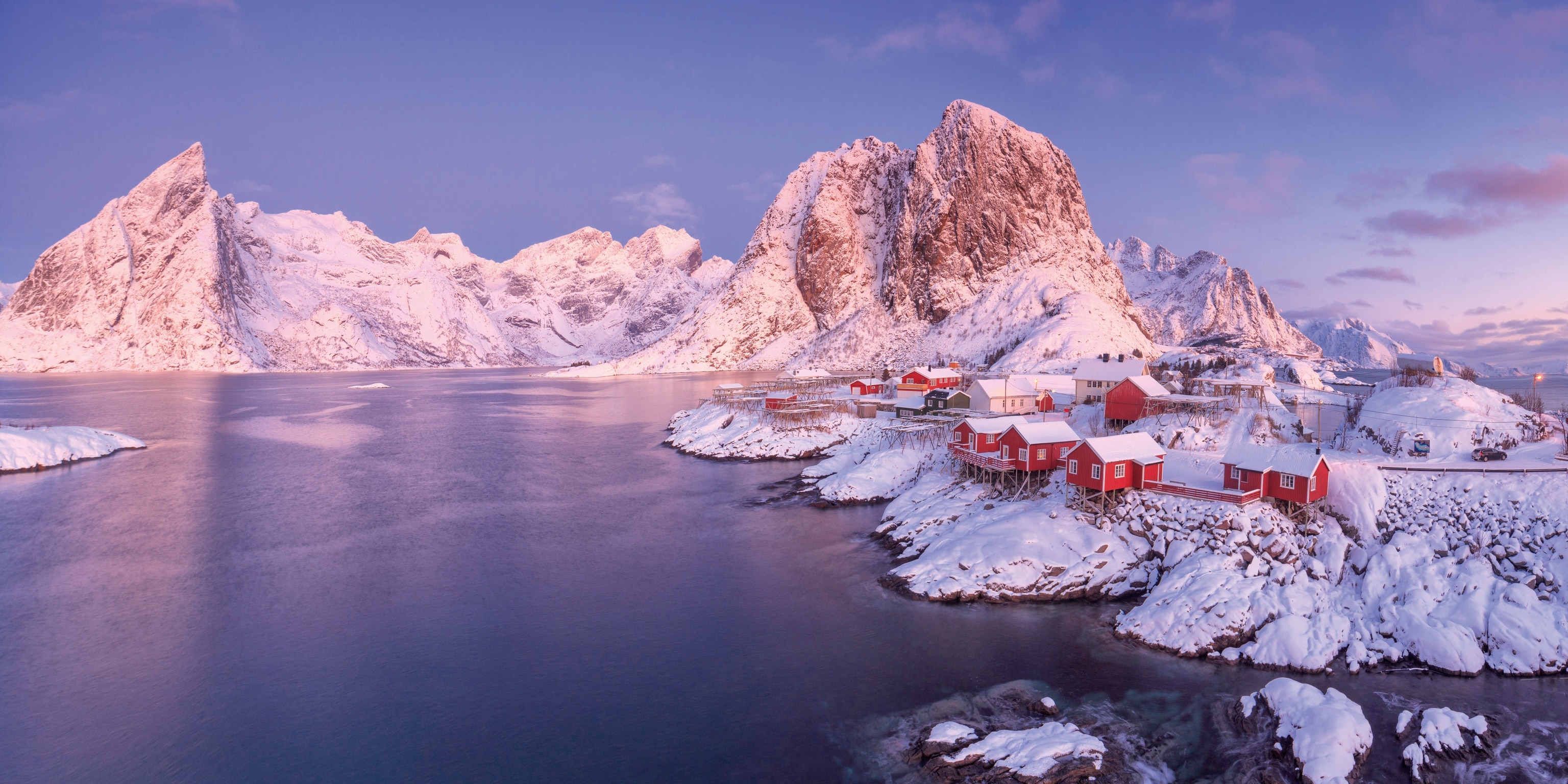
5 of the best Indigenous winter adventures in Sweden's Sámi country
Take a trip to Sweden’s Arctic and learn about life with the Sámi, the indigenous people of Lapland.
Traditionally nomadic, Sámi people have been herding reindeer across Sápmi (Lapland) for 7,000 years, long before the region was divided into Norway, Sweden, Finland and Russia. Reindeer are integral to the Sámi way of life, yet the Indigenous people’s lifestyle is under threat from climate change, mines and cultural appropriation. Sweden is home to 20,000 Sámi, a fifth of whom roam with their herd around Laponia — a UNESCO World Heritage Site that stretches across Sweden’s Artic North. The others keep their customs alive by continuing age-old traditions and sharing stories about their heritage. Here are some exciting ways to explore their culture.
1. Cross-country skiing
Lennart Pittja, the Sámi owner of Sapmi Nature Camp , guides guests on cross country skiing expeditions in Laponia. “We’ve lived here 7,000 years and you can hardly see any trace of that,” he says. “I take visitors on to my ancestors’ land, but people need my eyes and knowledge to see the evidence of 7,000 years.” As Lennart follows in his forefathers’ tracks, he points out an abandoned Sámi settlement hidden beneath snow and spruce trees on the Lule River. All that remains is a cooking area and bell, as well as a boat that’s been left chained to a tree since the road was built in the 1960s.
2. Meet the reindeer
At Nutti Sámi Siida lodge and camp in Jukkasjärvi, guests ride reindeer-drawn sledges and feed the animals with lichen. Afterwards, Sámi guide Klara Enbom prepares nettle soup, smoked reindeer and lingonberry juice around a campfire in a lavvu tent, while explaining the discrimination Sámi face and how wind farms disrupt herding routes. nutti.se “We lure tourists in with reindeers then educate the shit out of them,” she says, only half joking.

3. Visit a Sámi museum
Scattered with birch and pine forests, Sápmi’s frozen landscape appears uninhabited at first glance. But those who know where to look find evidence of Sámi culture dating back millennia. A third of Sweden’s 300 glaciers are in Laponia, and as they melt, they reveal discoveries — a 400-year-old sledge, 1,000-year-old arrows, 5,000-year-old skis. Ájtte Museum in Jokkmokk delves into Sámi history, exploring spiritual beliefs, crafts and survival techniques through displays of handmade drums, traditional dress and a lavvu tent. It offers a fascinating insight into the Sámi way of life.
4. Shop for Sámi crafts
Buying handicrafts promotes the local economy in rural areas such as Jukkasjärvi. It also shows an appreciation of Sámi culture and keeps it alive. The village’s open-air Márkanbáiki Museum has a shop selling baskets, hand-carved kuksa cups and silver jewellery — believed to banish evil spirits. Guide Thea-Olivia Persson Fjallman says, “We use reindeer skin to make coffee bags, fur for boots and antlers for knives.” Knives are bent to make them easier to grip with gloves and all crafts are decorated. “As we were nomadic, we couldn’t carry beautiful things, so we made useful things beautiful.”
5. Fish through an ice hole
Arctic Retreat’s chef Emanuel Swärd helps guests fish through ice in Överstbyn, then cooks their catch. After studying sport fishing, Emanuel became a guide, won a world record for reeling in the longest perch and evolved into a fishing influencer. “Perch is the gateway drug to fishing as it’s so easy to catch,” he jokes. Using satellite images, Emanuel helps guests find deep, rock-free spots in the Råne River or Vitträsket lake, drill a hole in the ice then use glow-in-the-dark bait to attract Arctic char.
Top trips: Winter with the Sámi
1. Sweden Watch reindeers race at the 400-year-old Jokkmokk handicraft market, go husky dog-sledding through spruce forest, snowmobiling on frozen rivers and take a moose-spotting safari on a trip to Swedish Lapland that also offers the chance to meet Sámi reindeer herders. From SEK 21,900 per person (£1,711) including a guide, activities and five nights’ full-board accommodation (except one lunch), with Laponia Adventures .
2. Finland Experience ‘Lapland as a Local’ with specialist Arctic operator 50° North and you can try ice fishing, snowmobiling, cross-country or downhill skiing and a husky dog expedition, as well as a sleigh ride and a visit to a reindeer farm near Äkäslompolo. From €1,530 per person (£1,365), including activities, winter clothing hire, six nights’ accommodation, two lunches and airport transfers to and from Kittilä.
3. Norway Learn to lasso, feed reindeer, cut firewood, listen to folky joik music and hear mythical tales from local storytellers. The Visit Natives Sámi Reindeer Herding Experience also gives travellers the chance to try getting around on wooden skis, drive a snowmobile and take a sleigh ride through the white Norwegian wilderness. From NOK 26,557 per person (£2,044), including guides, local transport, three nights’ accommodation, meals, camping supplies, winter clothing hire and airport transfers to and from Alta.
Related Topics
- WINTER SPORTS
- CARIBOU (REINDEER)
- INDIGENOUS PEOPLES
You May Also Like

Skiing in Yellowstone's backgarden: why Big Sky, Montana should be your next winter destination

Why Scotland should be your next ski destination
For hungry minds.

This medieval village is one of the buzziest places to ski

This ski paradise in Canada is one of the snowiest places on Earth

How Minnesota helped me find the magic of winter

Why not give biathlon a try on your next French ski trip

How does the future of ski resorts look in the face of climate change?
- Environment
History & Culture
- History & Culture
- History Magazine
- Mind, Body, Wonder
- Coronavirus Coverage
- Paid Content
- Terms of Use
- Privacy Policy
- Your US State Privacy Rights
- Children's Online Privacy Policy
- Interest-Based Ads
- About Nielsen Measurement
- Do Not Sell or Share My Personal Information
- Nat Geo Home
- Attend a Live Event
- Book a Trip
- Inspire Your Kids
- Shop Nat Geo
- Visit the D.C. Museum
- Learn About Our Impact
- Support Our Mission
- Advertise With Us
- Customer Service
- Renew Subscription
- Manage Your Subscription
- Work at Nat Geo
- Sign Up for Our Newsletters
- Contribute to Protect the Planet
Copyright © 1996-2015 National Geographic Society Copyright © 2015-2024 National Geographic Partners, LLC. All rights reserved
Matador Original Series
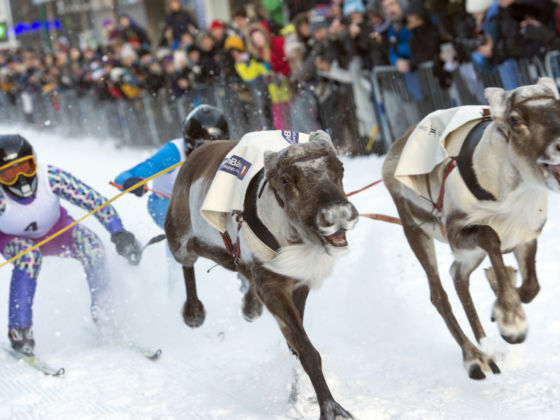
9 Experiences to Immerse Yourself in the Sámi Way of Life in Arctic Europe
G eographically, Arctic Europe makes up the majority of the land traditionally inhabited by Europe’s only indigenous people: the Sámi. A Finno-Ugric people, the Sámis have historically lived off the land by hunting wild reindeer and fish and later herding reindeer. They have lived in Northern Europe for thousands of years, before it was colonized and referred to as the countries we know today; Norway, Sweden, Finland, and Russia. Although Sápmi — the land of the Sámis — stretches south of the Arctic Circle, traveling above this line of latitude in Norway, Sweden, Finland, and Russia is the best way to get properly introduced to Sámi heritage and culture.
Matador Network spoke with Karoline Trollvik from the coastal Sámi community Gáivuotna/Kåfjord in Troms County. She previously worked as the director of the international indigenous festival Riddu Riđđu for four years and now runs the Várjjat Sámi Museum in Unjárga/Nesseby in Finnmark County, Norway. We also spoke to Lennart Pittja, a Sámi entrepreneur from Nábrreluokta who runs Sapmi Nature Camp in his native Sámi community of Unna Tjerusj, an hour’s drive from Gällivare in Sweden. From our conversations with Trollvik and Pittja, we determined the nine best ways for travelers to experience and learn more about Sámi culture in Arctic Europe.
1. Book a stay with a Sámi-run tourism operation.
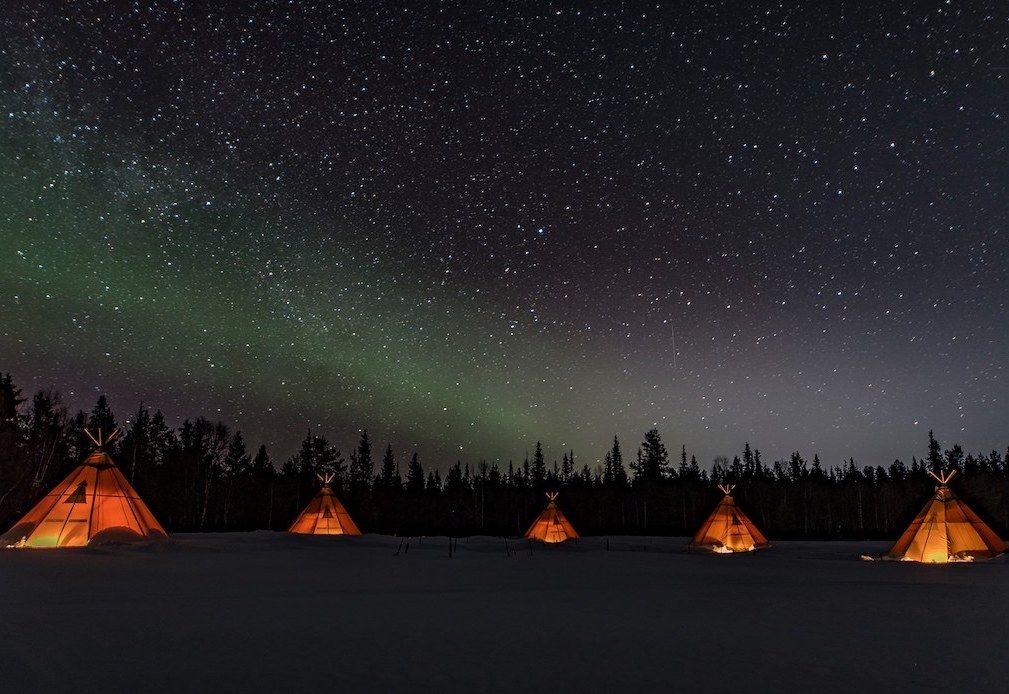
Photo: Sapmi Nature /Facebook
Stay at Sámi-run Sápmi Nature Camp in Nábrreloukta, Sweden. Lennart Pittja, who runs Sapmi Nature Camp, grew up in the Sámi community of Unna Tjerusj in a family of reindeer herders but chose a different direction in life. He has worked in the tourism sector for 25 years and takes pride that his professional activity teaches outsiders about his people’s culture and traditions. Spend the night sleeping in a lavvu , a traditional Sámi tent similar in looks to a Native American tepee; visit Pittja brother’s reindeer herd; ski on a lake; and reconnect with the land of Laponia, or “the largest area in the world (and one of the last) with an ancestral way of life based on the seasonal movement of livestock” according to UNESCO.
2. Rent a car and go on a tasting tour of traditional Sámi cuisine.
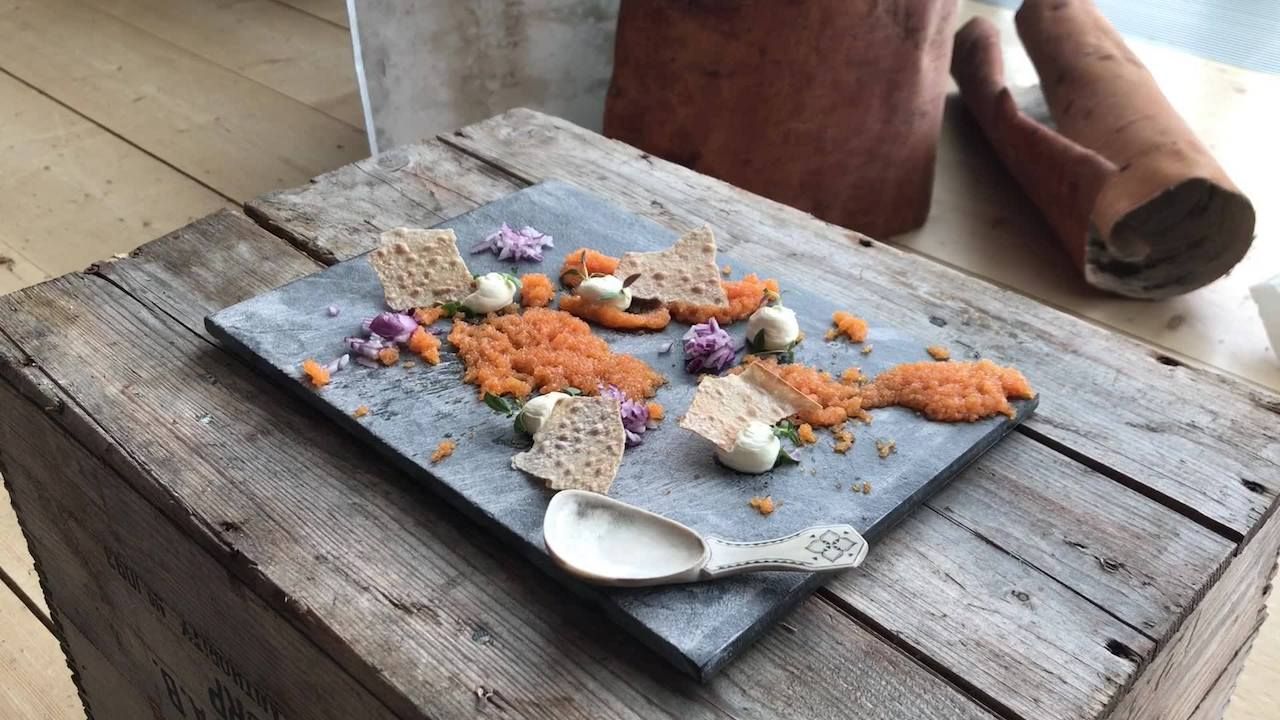
Photo: Slow Food Sápmi /Facebook
Sápmi — the homeland of the Sámi people — encompasses large parts of Sweden, Norway, Finland, and Russia north of the Arctic Circle. It’s vast, and Trollvik recommends you drive around the region to see the landscape where Sámi people lived and roamed the land long before national borders were a thing. Fly into Kiruna and rent a car at the airport. Drive towards Nikkaluotka and support the Sámi Slow Food movement by trying out reindeer meat and arctic char fish at Skaida restaurant. Continue south towards Jokkmokk, host of the Jokkmokk Winter Market — an important meeting place for Sámi people who have come here to trade and socialize since the early 17th century. In Jokkmokk, Pittja recommends you visit Sámi-run café and shop Arctic Deli where you can buy locally made cheese flavored with kvanne — a versatile herb the Sámis have traditionally added to reindeer milk to make it last longer, as well as have used for medicinal purposes.
3. Attend a Sámi design event in Tromsø, Norway.
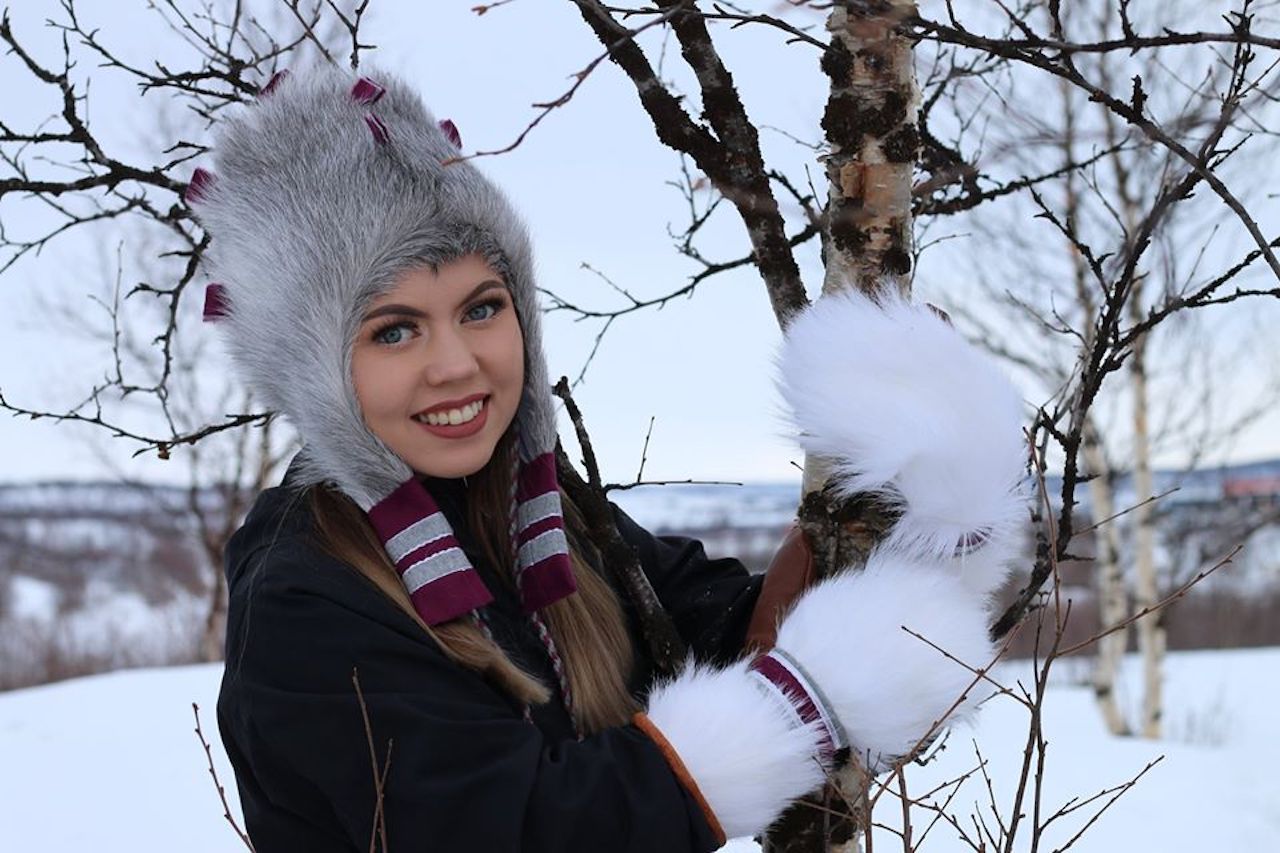
Photo: Šoop Šoop – Sámi design days /Facebook
Pay a visit to Šoop Šoop — Sámi Design Days — in Tromsø, Norway. Šoop Šoop is a two-day event meant to showcase Sámi handicraft and design, and it’s taking place for the first time in February 2020. You’ll be able to find glass-design inspired by Sámi culture from Boble Glasshytta , interior design from Makemi , and jewelry from LilleLi Smykker .
4. Visit Ájtte, Swedish Mountain, and the Sámi Museum in Jokkmokk, Sweden.

Photo: Ajtte Museum
The Ájtte Museum is a comprehensive introduction to Sámi history, culture, and traditions in Sweden. Wander through the exhibitions and learn some words in Northern Sámi — including ceavvi (moist snow that packs and freezes), geardni (a layer on the snow reminiscent of ice), and njáheu (clogged snow that sticks very lightly under sleighs and skis) — that reindeer herders use to describe the ecological relationship between the reindeer and the snow. Read about Sámi drums and the history of traditional Sámi shamanism, and get to know nine different kolts (traditional Sámi clothing) from Swedish Sápmi that are displayed at the museum. During summer, the museum also runs guided tours of its adjacent Mountain Botanical Garden.
5. Read up on Sámi history and culture before and during your visit.
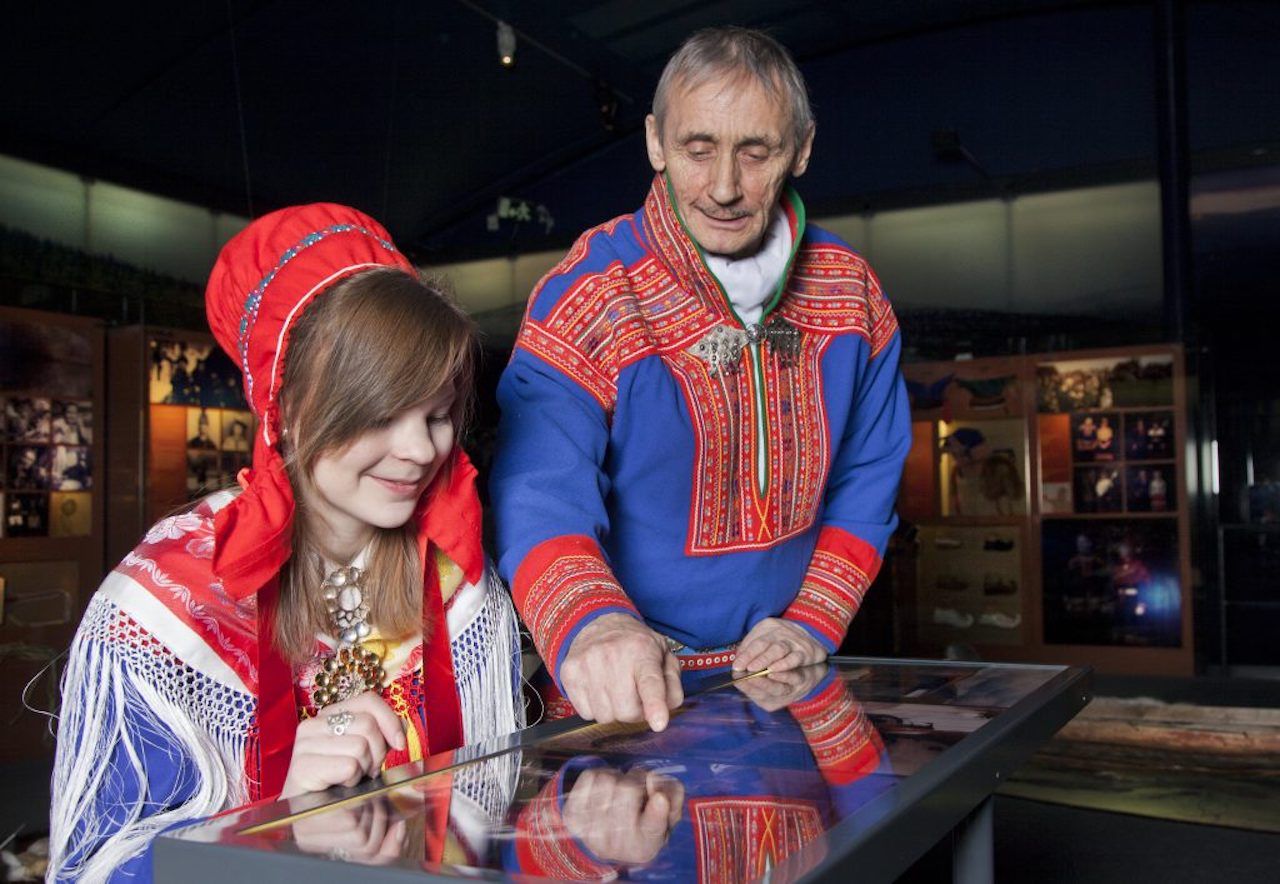
Photo: Siida
Trollvik emphasizes the importance of learning about the history of the Sámi people. “We are an indigenous minority that has been assimilated and colonized by different nation-states throughout history. We’re still fighting for the rights to continue our traditional livelihood and to live off the land and resources from a Sámi perspective. It is often in direct conflict with state interests, so a little time to dig into this is not a bad idea,” she says. She also recommends the topic to keep the conversation going, claiming, “You’ll also have a lot more to discuss with the Sámi people you meet on your travels.”
To get an idea of the current situation and issues, Trollvik recommends the website of non-governmental organization Saami Council . To get a brief introduction to Sámi culture and history, Pittja suggests samer.se — the website of the Sámi information center which aims to educate people about Sámi people and culture — as well as the tourism board of Swedish Lapland . Once in Arctic Europe, you can also visit the Sámi History & Culture Museum in Lovozero, Russia, where more than half of Russia’s Sámi population of 1,600 people live today, or Siida , a nature center and Sámi museum in Inari, Finland.
6. Have a blast at a Sámi festival.
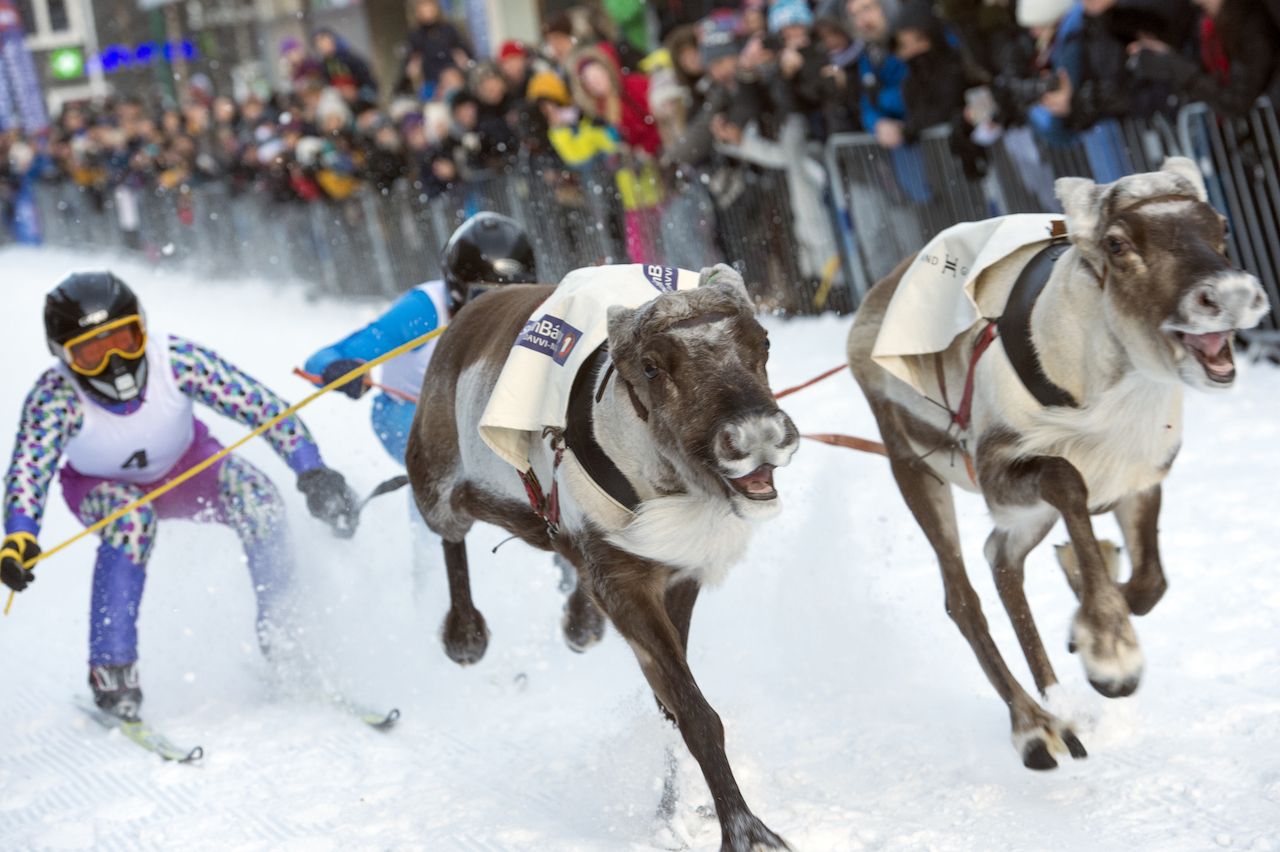
Photo: V. Belov /Shutterstock
Celebrate Sámi National Day on February 6. Sámi National Day marks the day when the first Sámi congress, an assembly held to discuss Sámi interests that attracted 150 Sámi participants from Sweden and Norway, was held in Trondheim in Norway in 1917. Both Tromsø in northern Norway and Jokkmokk in northern Sweden host week-long celebrations in conjunction with Sámi National Day. In Tromsø, celebrations include a championship in reindeer racing and concerts and films. In Jokkmokk, in conjunction with its annual winter market , celebrations include a traditional reindeer caravan and joik (traditional Sámi song) performances on the marketplace’s outdoor stage. Other Sámi events throughout the year include music festival Ijahis Idja in Inari in Finland, the Sámi Summer Festival in Lujavri/Lovozero in Russia in June, and the Skábmagovat Film Festival in Finland in January.
7. Wander the aisles of a Sámi arts and craft market and buy doudji , or Sámi handicrafts.
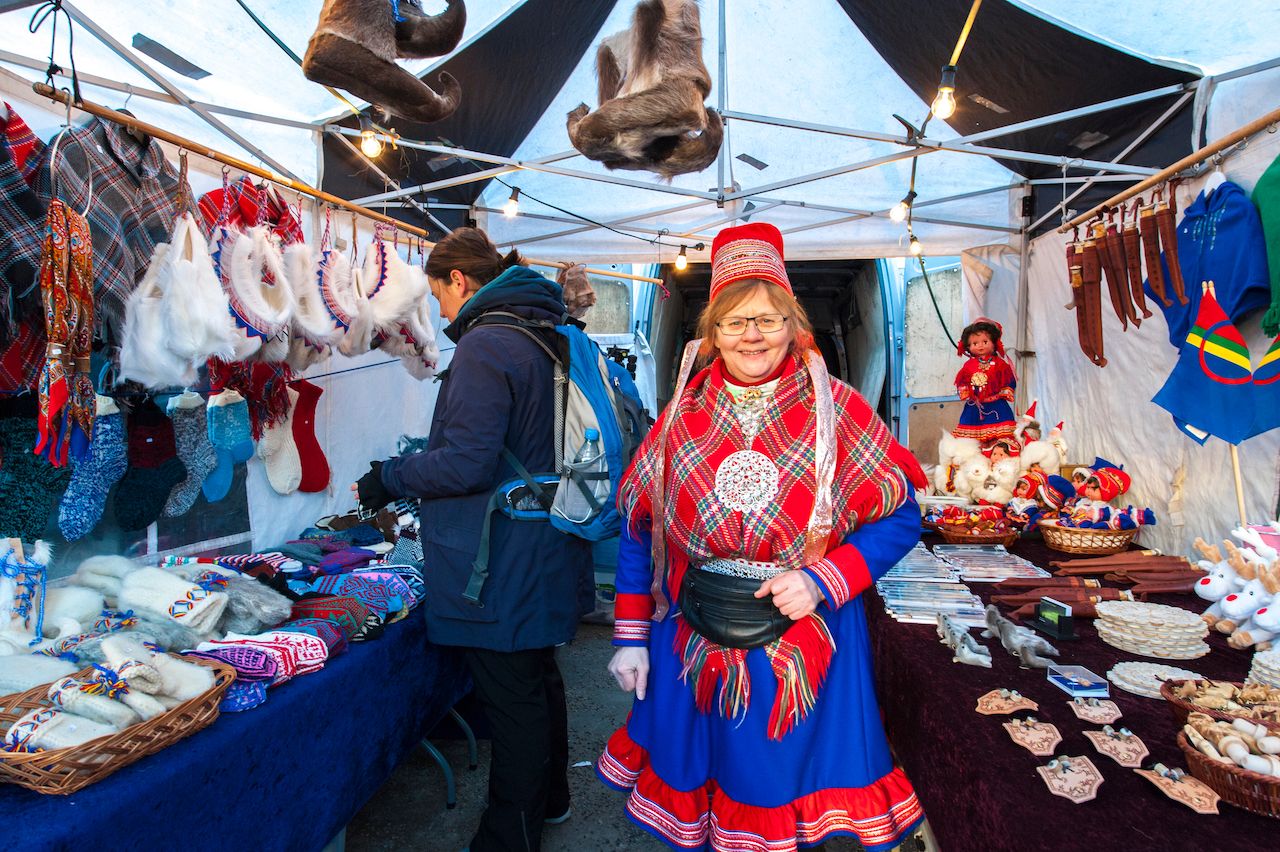
“Vuonnamárkanat in Varangerbotn, Norway, is an excellent one-day market that gathers duojarat (Sámi artisans) and handicrafters. All the Sámi museums have gift shops with Sámi-made handicraft and design,” says Trollvik. She encourages travelers to avoid fake Sámi crafts that are mass-produced, and to do just that, she advises you “ask the shopkeepers where they get their Sámi handicraft and if they are made by Sámi people. Buying real Sámi handicraft supports our culture and keeps our rich handicraft traditions alive.”
8. Cross-country ski on ancient Sámi hunting grounds in the very north of Finland.

Photo: Holiday Village Valle/Lomakylä Valle /Facebook
Get your skis on and practice something the Sámi people have done for centuries: cross-country skiing through the vast landscapes of Sápmi. In winter, at Sámi-run Holiday Village Valle in Utsjoki, Finland, Sámi guides take you out on the snow in the very north of Finland. You might be fortunate to spot elk, hare, and wild grouse while breaking a good sweat.

9. Meet, talk, and listen to Sámi people.

Photo: Kartinkin77 /Shutterstock
Visiting the museums and eating traditional foods are great ways to learn about a culture, but it can never replace talking and listening to the people native to that culture face to face. Trollvik says, “The Sámi are a varied people who have been living off different landscapes and resources. A lot of information is still carried on verbally in Sámi cultures across Sápmi, so talking and getting to know us is your greatest source of knowledge.” She continues, “Plus, Sámi people have a reputation for being great hosts, and we love our culture and are very proud to still carry on traditions and language. If you show interest, people will be happy to explain and teach you.”
More like this
Trending now, the 9 best hotels inside airports where you can actually rest, why wilmington, nc and its island beaches belong on your must-visit list, how to visit maui responsibly and respectfully in the wake of recovery, steveston village comes alive in spring. here’s how to enjoy it on a trip to richmond, bc., where to play, eat, and stay in cincinnati if you love baseball, bourbon, beer, and more, discover matador, adventure travel, train travel, national parks, beaches and islands, ski and snow.
The Sami Museum
Jessica Lindgren/imagebank.sweden.se
- Map & transport
The Sami Museum
Visit the interesting Sami Museum and get insight the life about one of the world’s indigenous people.
The Sami Museum is traditional and contemporary. The museum, by local expression called Ájttes geographic area of operation covers the entire mountain region and the traditional Saami settlement area from the border to the west and down into the forestland, 1000 km from south to north. Ájtte tells of a man in his environment of nature and culture from an ecologically holistic perspective. The museum has three tasks they work with. The first is the mountain region`s nature and culture, the second is the Sami culture, and the last is scale information for the tourist. The museum is probably the most visited Sámi owned cultural institution and, therefore, important as a representative of the Sami culture.
See more: The Sami people in Lapland
Getting here
Jokkmokk’s relative isolation means it can take time, but there are reliable connections by train and bus. Every summer, the famous train ride "Inlandsbanan" stops in Jokkmokk, and more and more tourists use this solution to visit this historical city up north.
Information
Getting there.
Find routes to this destination.
Coordinates
- Lattitude: 66.604170
- Longitude: 19.842527
About the Sami People
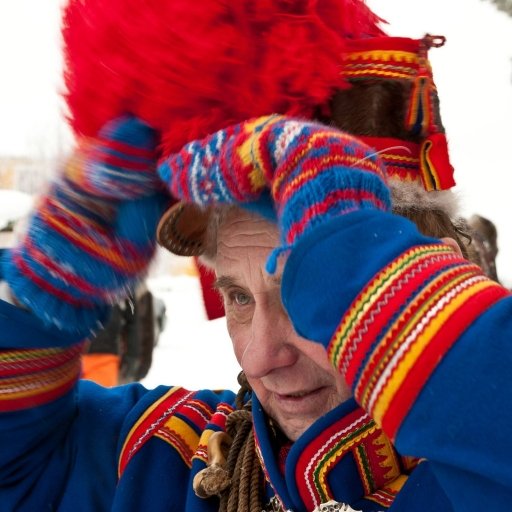
The Sami People in Sweden

The Sami People in Finland
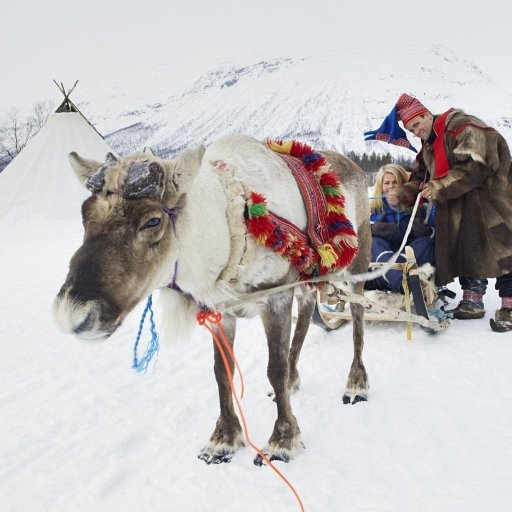
The Sami People in Norway
To do in swedish lapland.
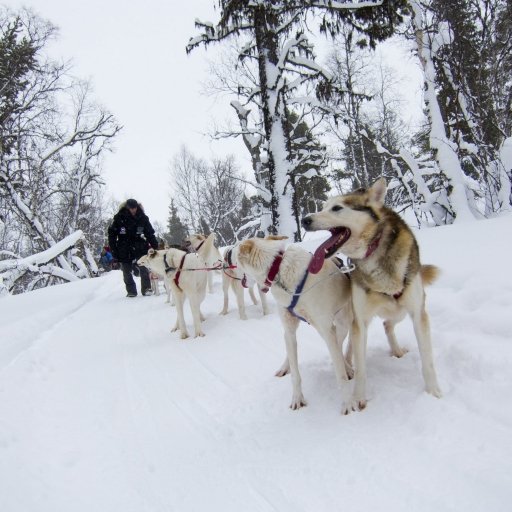
Dog Sledding in Swedish Lapland
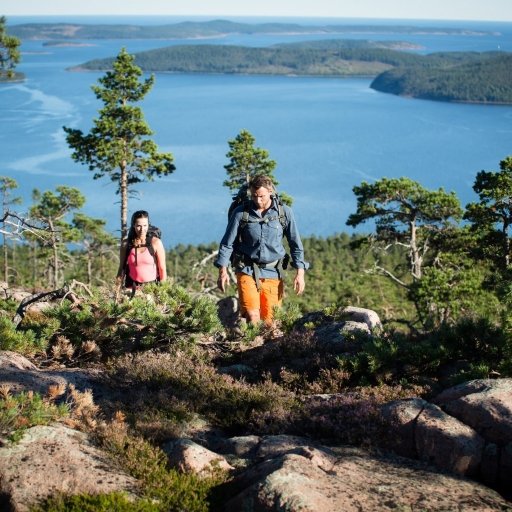
Hiking Trails in Swedish Lapland
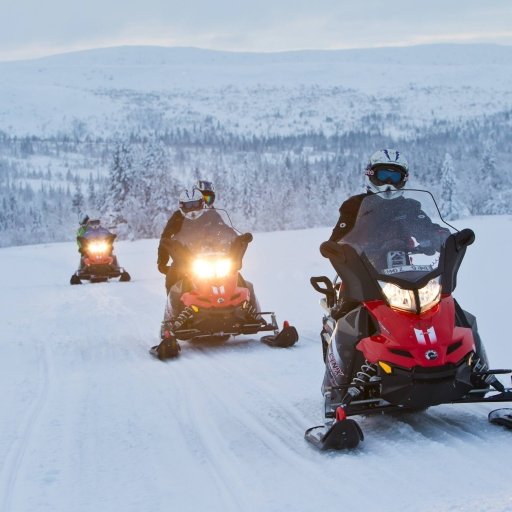
Snowmobiling in Swedish Lapland
Ski resort in finnish lapland.

Ski Saariselka resort

Ylläs Ski Resort

Levi Ski Resort
Sustainable destinations in northern norway.
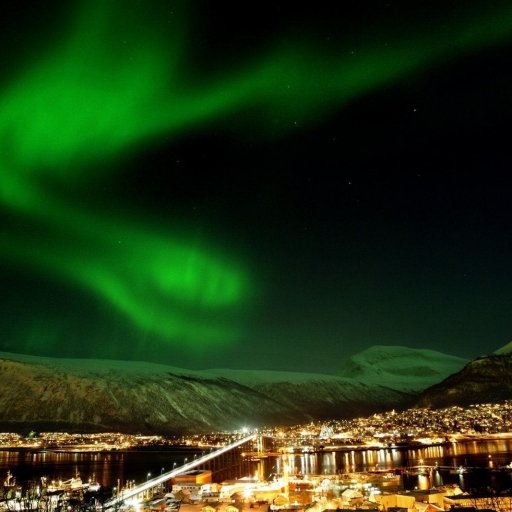
Lyngenfjord
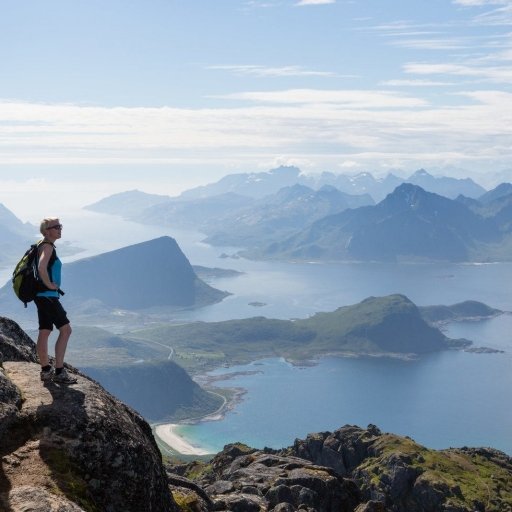
Lofoten Islands
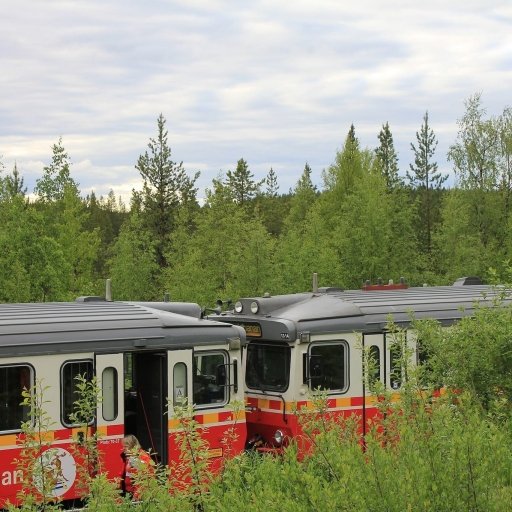
Inlandsbanan Railway Tour
Attractions in rovaniemi.

The Arctic Circle Borderline in Rovaniemi

The Arktikum Museum

Rauna Wildlife Park
- Nordic Countries
- Inspiration
- Heritage & Culture
- Nature & Activities
- Design & Shopping
- Nordic Vikings
- Seasons & Weather
- Visitnordic
- Privacy Policy
- Terms of Use
- Become a Partner

Change location
- UK / International
- Call toll-free until 8pm EDT 617-223-4521 617-223-4117 or
- REQUEST A QUOTE
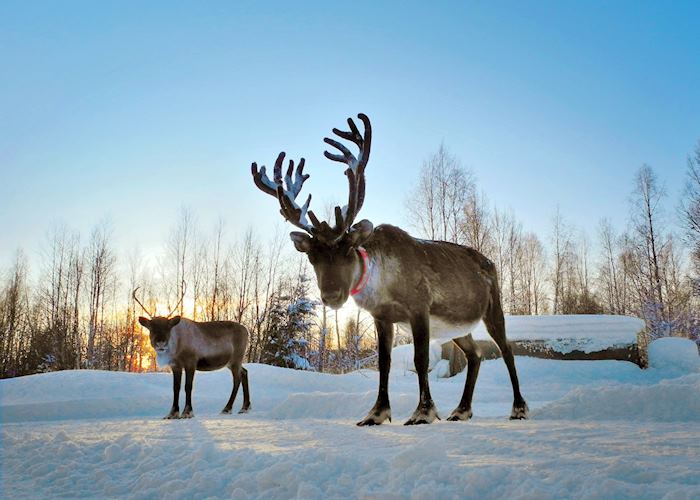
Sami culture and reindeer experience
Venture into rural Swedish Lapland to get to know about the culture of the Sámi people, who are indigenous to this remote region. In a small group led by a local guide, you’ll spend a morning visiting a Sámi village not far from your hotel, meeting some of the residents to find out more about their traditions and way of life.
You’ll meet reindeer herders and their herds as they explain how the animals are integral to their survival. You’ll also see and try for yourself some of the specific skills that have helped the Sámi thrive in the Arctic landscape, including lassoing and driving a sled.
Afterwards, you can warm up with a Swedish coffee and traditional foods inside a heated lávvu (a conical Sámi tent) as your guide shares stories tied to the customs of the Sámi people.
Your guide will pick you up from your hotel in Kiruna for the short journey to the village — one of just a handful of Sámi communities in this area. The Sámi people have lived in these parts of Sweden for centuries, carving out a way of life that’s closely meshed with the natural world. Traditions have been passed down through generations, and while the Sámi have lived alongside an ever-changing modern world, many parts of their culture have remained unchanged.
Your guide will introduce you to some of the village residents, including reindeer herders, who’ll show you their animals and explain how they’re an integral part of the way of life here. They’ll also demonstrate some of the skills required for their role, which you can try for yourself, including lassoing and feeding the animals and driving a sled along a designated track.
With the cold temperatures in this region, you’ll want to warm up after your activity, so you’ll be invited to sit inside a heated lávvu (conical Sámi tent). Beside the warmth of an open fire, you can sip Swedish coffee and try some traditional foods, such as reindeer meat and fresh breads, as your guide shares stories that the Sámi have been retelling for generations. You’ll then be returned to your hotel.

Start planning your tailor-made trip by contacting one of our Sweden specialists
- 617-223-4521 617-223-4117
- Make an inquiry
Photos of Sami culture and reindeer experience

Other experiences in Swedish Lapland
These activities are designed to give you the most authentic experiences around where you're staying. We work with local guides, who use their knowledge and often a resident's eye to show you the main sights and more out-of-the-way attractions. Our specialists can suggest tours and activities that will introduce you to the local ways of life.

Husky safari
Experience the thrill of dog-sledding in Swedish Lapland. You’ll find out how this pastime is so important to Sámi culture, meet the team of huskies and have a chance to take the reins yourself as you ride through snow-covered forest.

Ice dining under the northern lights
You can explore a different side of the Lapland wilderness with a private meal on a frozen lake. Sit on reindeer hides under a traditional Sámi tent and enjoy a three-course meal as you watch the dark skies for the aurora borealis.

Kayaking on the Lule River
Soak up the natural beauty of Swedish Lapland from the water on this six-hour kayaking tour. Suitable for both beginners and experienced kayakers, the tour includes lunch cooked over an open fire on the riverbank.
Experience it for yourself
You can enjoy this activity as part of the suggested tours below, or we can weave it into a trip shaped entirely around you.
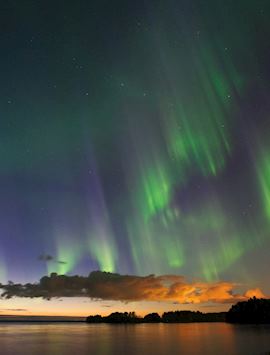
Swedish winter wonderland
7 days from $7,935pp
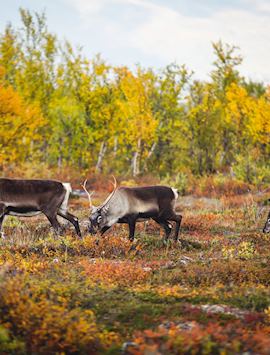
Grand tour of Scandinavia
15 days from $11,785pp

Active Scandinavia
9 days from $8,840pp

Highlights of Swedish summer
13 days from $8,320pp
GIRON REINDEER

Winter Adventures in Swedish Lapland

Winter Adventures In Swedish Lapland
Looking for a great place to visit during your winter holiday? Kiruna in Swedish Lapland has it all. Kiruna is a small town above the Arctic Circle, in many ways defined by the modern mining industry: A new city center is being built and old buildings are moved or torn down. In Jukkasjärvi you can visit the world-famous Icehotel. From Nikkaluokta you can hike to Sweden's highest mountain Kebnekaise. The countryside outside Kiruna is magnificent and still largely untouched.
Lapland is the home of the Sami people, the reindeer people. We have lived and survived here for thousands of years and the reindeer are well adapted to the climate in the Arctic.
My company Giron Reindeer offers winter activities with genuine Sami people, natural beauty and real reindeer only 20 minutes northwest of Kiruna.
We look forward to seeing you! But remember - you have to book your tour in advance! Tours available during the winter from December to March.
Nils Håkan Enoksson
Our time spent with Giron Reindeer truly was a dream that I still cannot believe was real. Not only were we able to be up close with these amazing animals and got to know their personalities, but we had a breathtaking ride through a real-life winter wonderland.
Brittany Moore
Leng C Leck

Unforgettable
- LATIN AMERICA
- MEDITERRANEAN
- Latin America
- Mediterranean
- Adventure Travel
- Private Lodging
- Private Yachts Charters
- Private Jet Charters
- About Blue Parallel
- In The Media
- For Travel Agents
Polar Regions
Experiential Travel In Sweden: Experience The Sami Culture
Heading off the beaten track to connect with local indigenous people in remote areas is a wonderful way to enhance your travel experience. These unique and authentic experiential travel experiences can deepen your understanding of destinations, cultures and traditions, and open the door to truly immersive journeys.
There are numerous indigenous cultures around the world that have endured, despite historical challenges and ongoing modern influences, including Maya, Quechua, Mapuche and Guna in Latin America, Sami in areas of the Polar regions, Basque or Euskal Herria in the Basque Country, and Yanomami, Kayapó, and Ashaninka in the Amazon rainforest.
In this article, we take a closer look at the Sami people, who reside in the Arctic and subarctic regions of Scandinavia and Russia…
WHO ARE THE SAMI PEOPLE?
The Sami people are the indigenous inhabitants of Sapmi, an area that stretches across the northern parts of Sweden, Norway, Finland, and the Kola Peninsula in Russia. Their distinct cultural heritage, languages and traditions have developed over thousands of years, shaped by their close relationship with the Arctic environment.
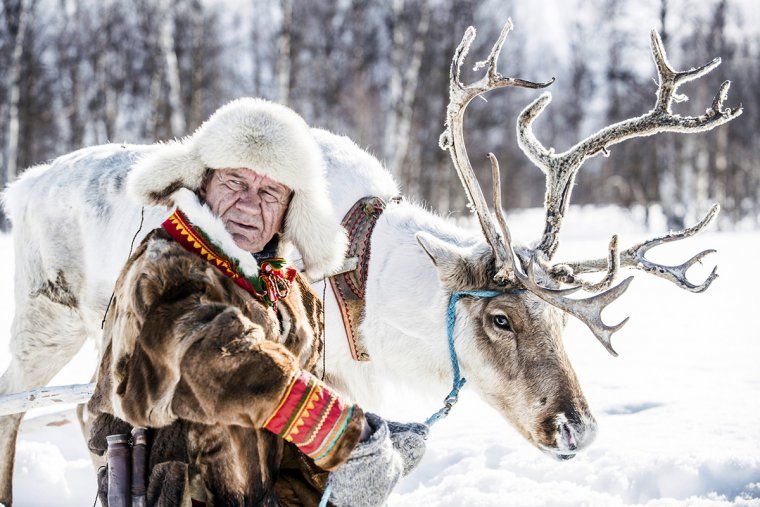
Their culture is rooted in their harmonious relationship with the natural world, with reindeer herding, fishing, hunting and gathering being an integral part of their identity. As well as being a way of life for these communities, these activities are often a source of income.
Sami culture is closely tied to the Arctic and subarctic ecosystems, including forests, tundra, rivers and lakes. The deep connection between the Sami people and their ancestral lands is visible in their traditional songs and storytelling, unique craftwork and clothing.
DOWNLOAD OUR BESPOKE LAPLAND JOURNEY PDF
Joik, a traditional Sami song and one of the oldest folk music forms in Europe, typically tributes a person, wild animal or natural landscape, while Duodji – a traditional Sami handicraft – is practiced by many in the community and made with natural, local materials like wood and bark. They also wear gákti, traditional clothing that varies in design and colors based on different regions and family affiliations.
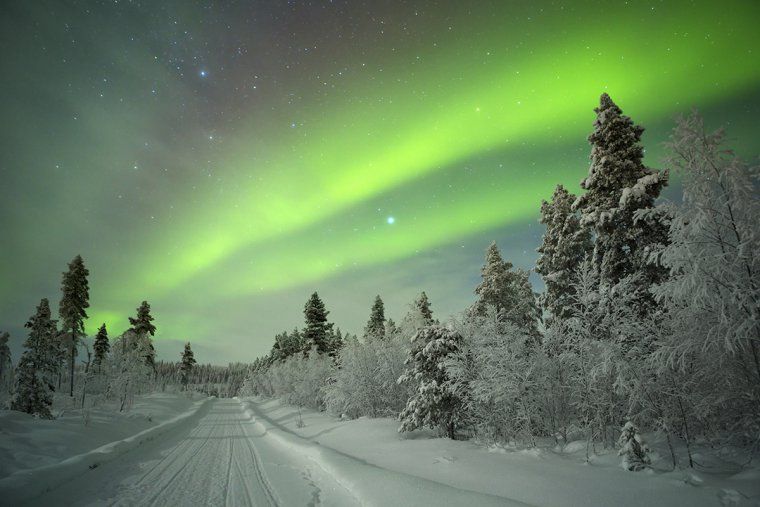
Sustainability is another important aspect of Sami culture and this is reflected in their culinary heritage. Many of their ingredients are foraged and local to their communities, including roots, herbs and berries. As fishing and hunting experts, their dishes often include elk, Arctic char, whitefish and reindeer.
They are also known for their coffee ceremony, a social ritual of exchanging stories as coffee is prepared over an open fire. Once the kokkaffe (boiled coffee) is ready, it is poured into birch wooden cups, often over a local cheese. This is traditionally served with smoked reindeer.
SAMI PEOPLE IN SWEDISH LAPLAND
Swedish Lapland, in the northernmost region of Sweden, encompasses a particularly significant part of Sapmi and still remains the home to many indigenous Sami people. It is estimated that the Swedish Sami population inhabits 35% of Sweden; whether you immerse yourself in the community, embark on adventures through the breathtaking landscapes or enjoy Sweden’s finest gastronomy, Sami tradition will play a big part in your journey here.
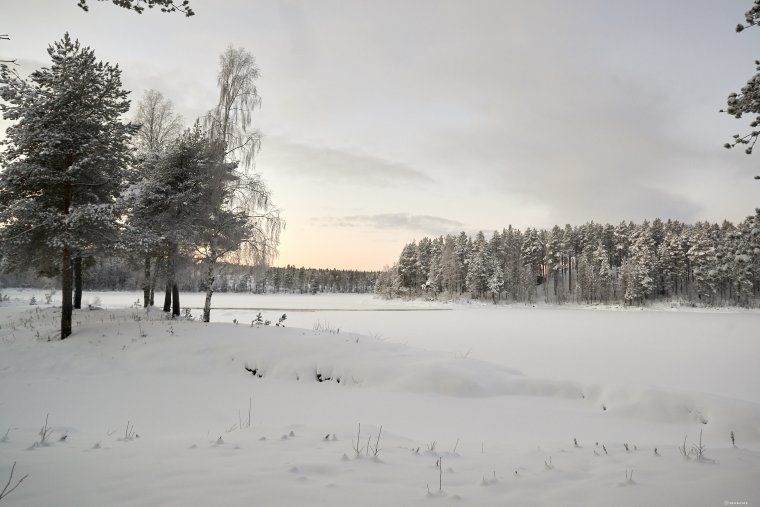
The breathtaking and relatively untouched natural landscapes in Swedish Lapland have been maintained and respected by the Sami who have inhabited the region for thousands of years. This means today, travelers can enjoy spectacular scenery, from frozen lakes and snow-capped mountains to mysterious pine forests and wilderness woodlands.
Their ongoing protection and dedication to their land allows travelers to embark on a myriad of outdoor adventures, including hiking, horseback riding, snowmobiling, cross-country skiing and more.
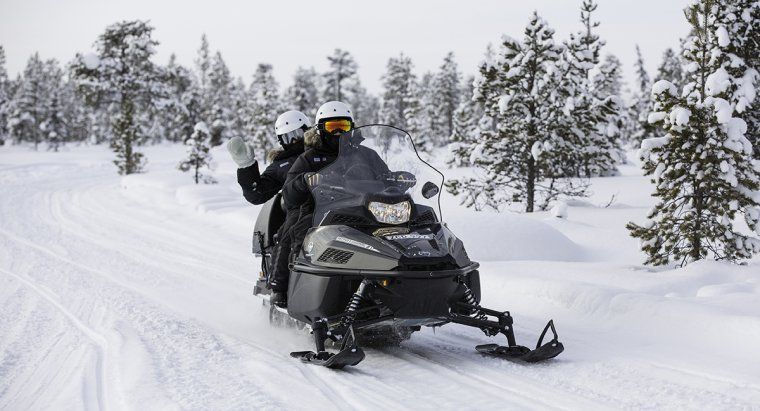
The Sami cultural presence is still strong here and can be witnessed while journeying through the area, from visiting communities and attending cultural events to participating in traditional Sami activities.
EXPERIENTIAL TRAVEL IN SWEDEN WITH BLUE PARALLEL
On your luxury tour of Swedish Lapland with Blue Parallel, you will pass through Jokkmokk. Jokkmokk, a small town with a population less than 3,000, is one of the central hubs of the Sami community in Sweden. Three miles north of the Arctic Circle, this winter wonderland of a town is even snow-kissed in June and the surrounding lakes remain frozen for up to six months at a time.
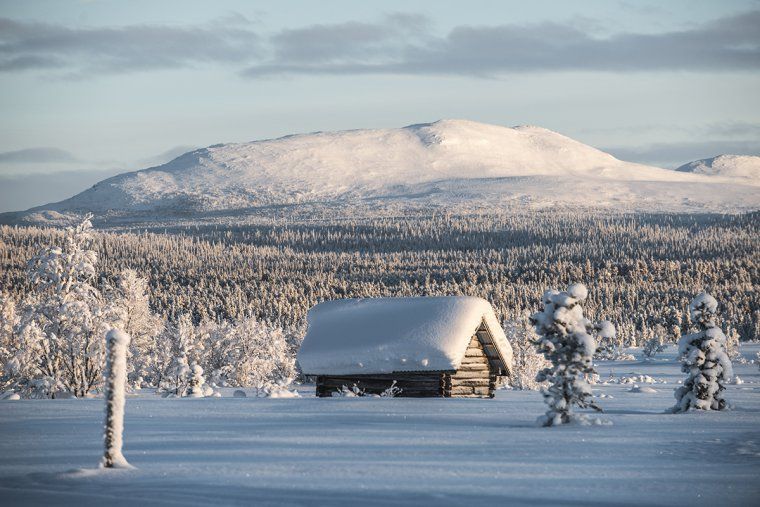
During your visit here, you will meet with a local Sami to learn more about their customs firsthand. Then, you will be invited to enjoy a traditional Sami lunch, a blend of traditional and modern dishes, often featuring reindeer meat, Arctic fish and delicious wild berries.
Our portfolio of luxury accommodations in Swedish Lapland also celebrate the indigenous traditions of the region. For example, the Treehotel in Lulea offers ice dining which invites you to enjoy a delicious BBQ dinner cooked on the ice, all from the comfort of a tent authentic to the indigenous Sami communities.
In Kiruna, Fjellborg Arctic Lodge offers its own unique Sami experiences. You can embark on an exciting snowmobile excursion to an indigenous Sami camp where you can learn more about the fascinating culture from the community itself.
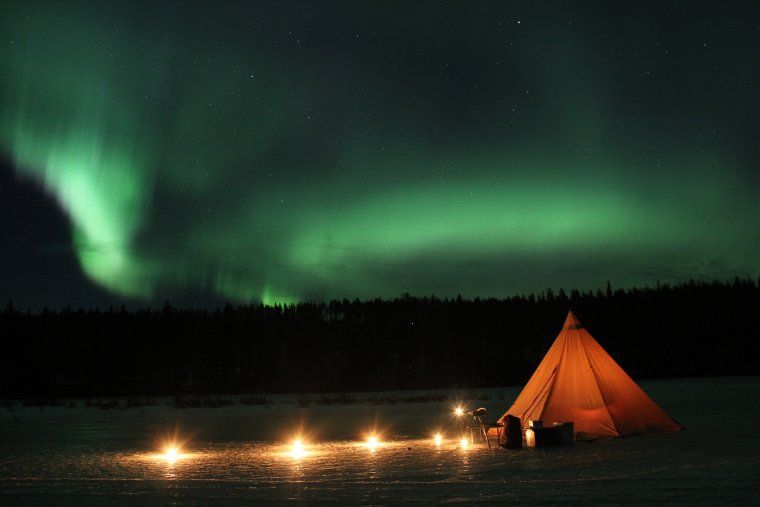
For more information on bespoke, luxury tours to Swedish Lapland and experiential opportunities with the Sami people, contact one of our travel experts today .
Tailor-Made Itineraries To Swedish Lapland Discover the spectacle of Swedish Lapland with a bespoke, luxury tour… VIEW OUR BESPOKE SWEDISH LAPLAND TOUR
- Skip to primary navigation
- Skip to main content
- Skip to footer
Nutti Sámi Siida
Sámi eco adventures
Award winning
Come to Jukksjärvi and experience sustainable eco tourism! Here at Nutti Sámi Siida the atmosphere is familiar and the personal meeting is central, regardless of whether you make a day visit or stay longer. We offer everything from activities and museum, to accommodation and dining experiences. No matter what you choose, the Sámi culture will be in focus and our goal is for you to learn something new!
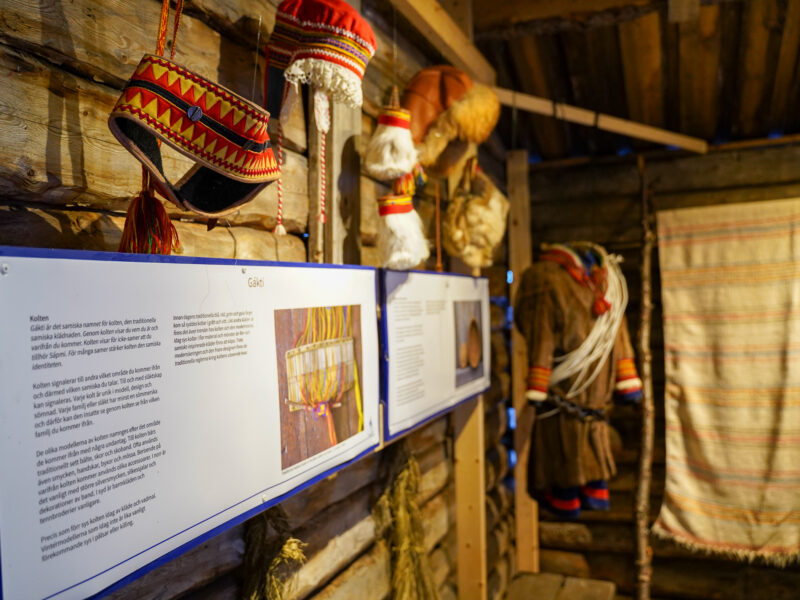
Museum & Café
Visit Márkanbáiki, the sámi museum in Jukkasjärvi. Feed reindeer, visit outdoor exhibitions, look at modern art and taste traditional Sámi food. Read more about Museum & Café
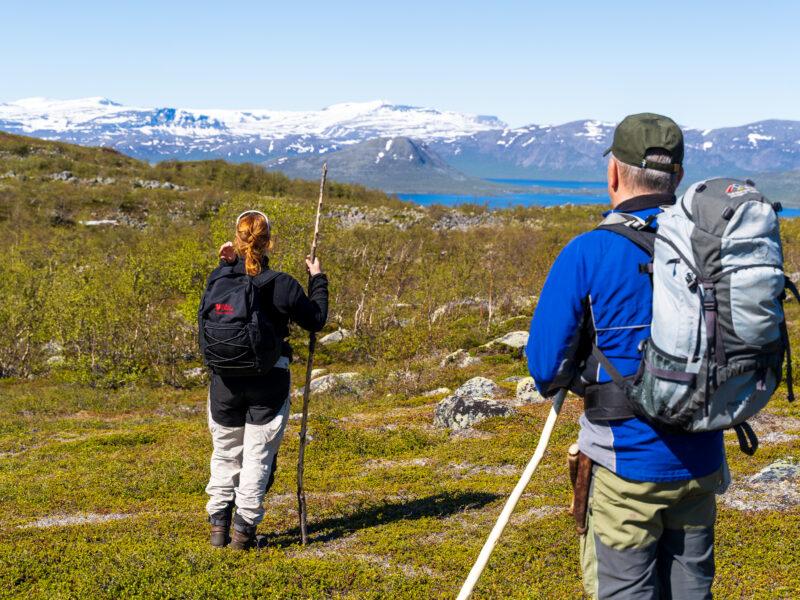
Gáisi - mountain hike
Visit the mountains where reindeer still roam freely, and the varied landscape shows itself in all its glory. Your Sámi guide will show the way! Read more about Gáisi – Mountain hike in Sápmi
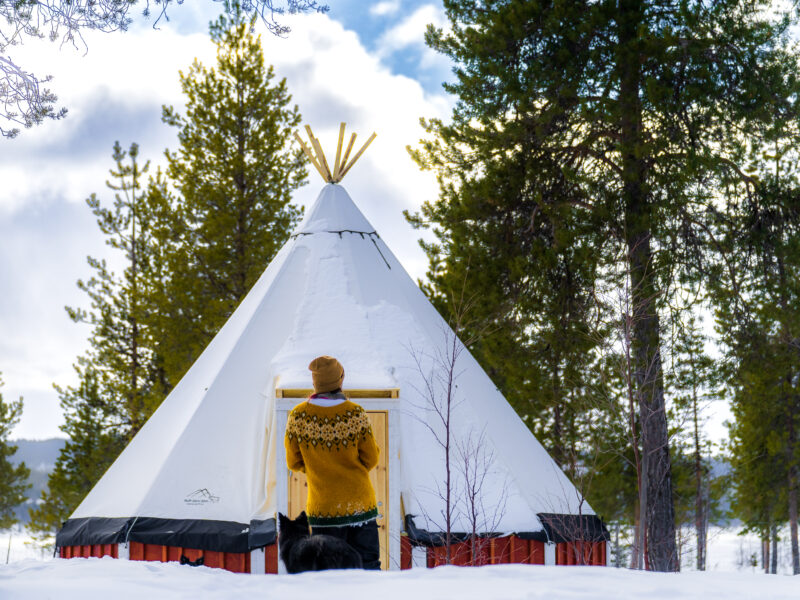
Reindeer Lodge
Enjoy the peace in our cozy small-scale lodge with reindeers next door. Choose between a glamping tent, a traditional lávvu or an idyllic cabin! Read more about Lodging
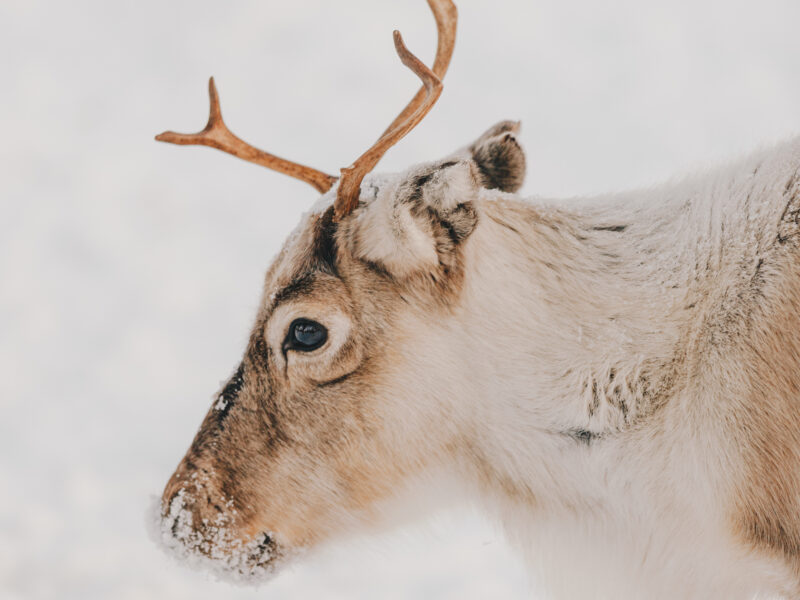
Miessemánnu - reindeer calfs
An exclusive opportunity to watch new born reindeer calves. Your guide will happily tell you more about reindeer herding and the Sámi lifestyle. Read more about Miessemánnu – Reindeer calf month May
Nutti Sámi Siida on Instagram

Márkanbáiki - Sámi open-air museum: Marknadsvägen 2, Jukkasjärvi, Sweden Reindeer Lodge: Paksuniemivägen 188, Jukkasjärvi, Sweden
- facebook-alt
- tripadvisor
Information
About Nutti Sámi Siida Travel here Press & Media
Nutti Sámi Siida AB
- Campervans Stockholm campervans Malmö campervans Gothenburg campervans
- Motorhomes Stockholm motorhomes Malmö motorhomes Gothenburg motorhomes

Journey into the Heart of Sweden: Discovering the Sámi Culture
Homepage Blog Travel Information
Posted Jun 15, 2023 in Travel Information

In the vast stretches of Sweden's northernmost regions, there exists a culture that has stood the test of time and emerged as an embodiment of sustainability, respect for nature, and distinct cultural richness. This is the world of the Sámi people, Sweden's indigenous group, which continues to play a vital role in the country's cultural tapestry.

Sámi Experiences
1. reindeer encounters .
2. Jokkmokk Winter Market
Sámi museums , 1. ájtte : swedish mountain and sami museum .

2. Vilhelmina Norra Sameförening Museum
Sámi restaurants , 1. restaurant akerlund , 2. enoks .

Responsible Tourism
Related posts.
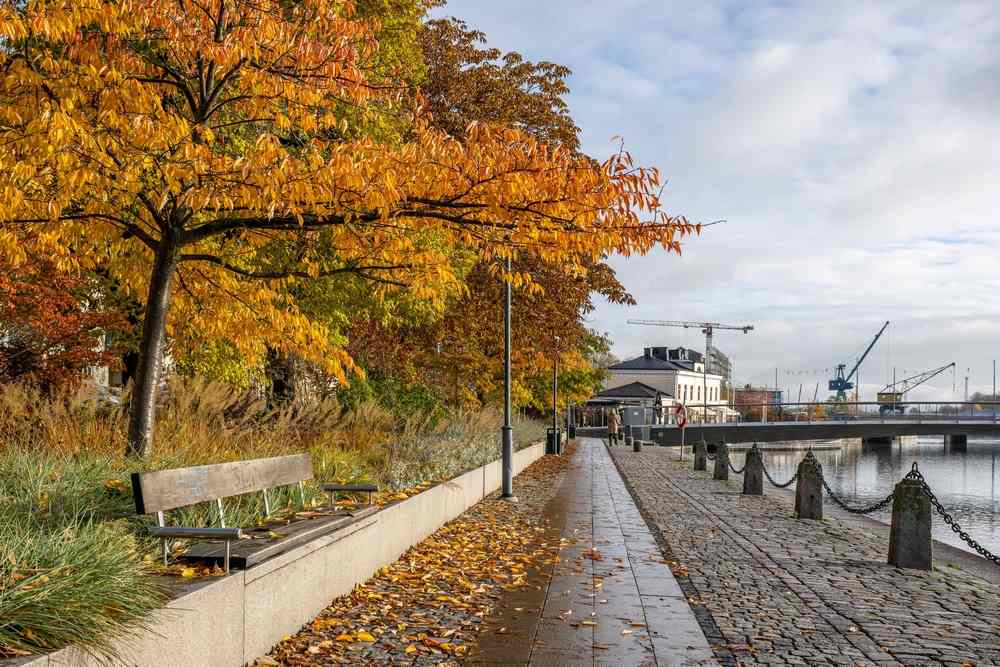
Exploring The Serene Beauty Of Sweden In November

The Allure Of Helsingborg: Guide To One Of Sweden's Oldest Cities

Discovering Värmland County: A Hidden Gem In Sweden

Exploring The Majestic Forests Of Sweden
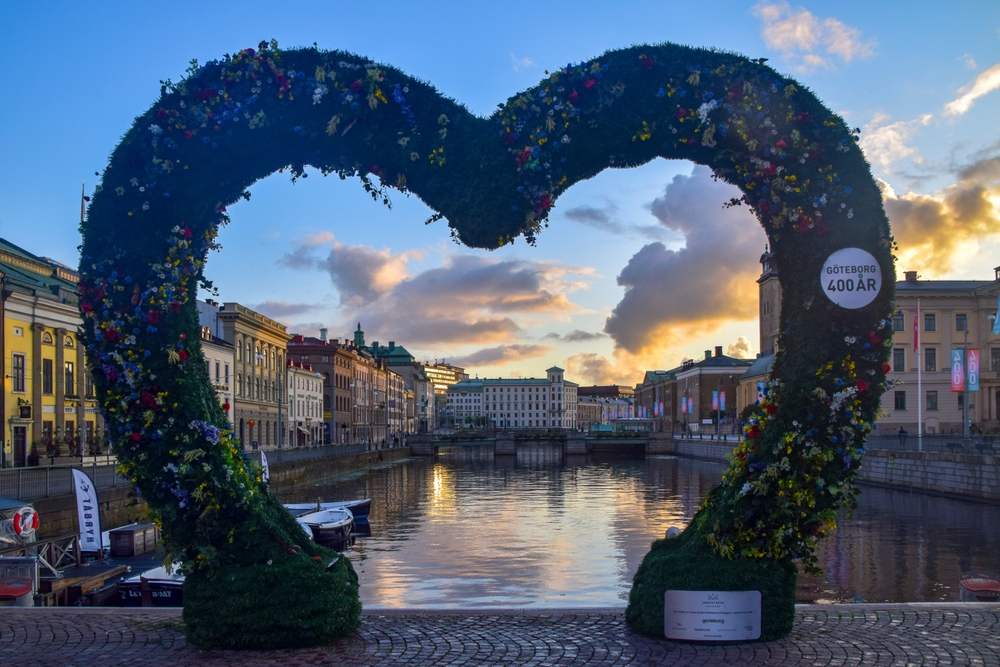
Sweden In July: An Unforgettable Travel Experience
Let’s go on an adventure!
Unbeatable prices. Premium customer service.
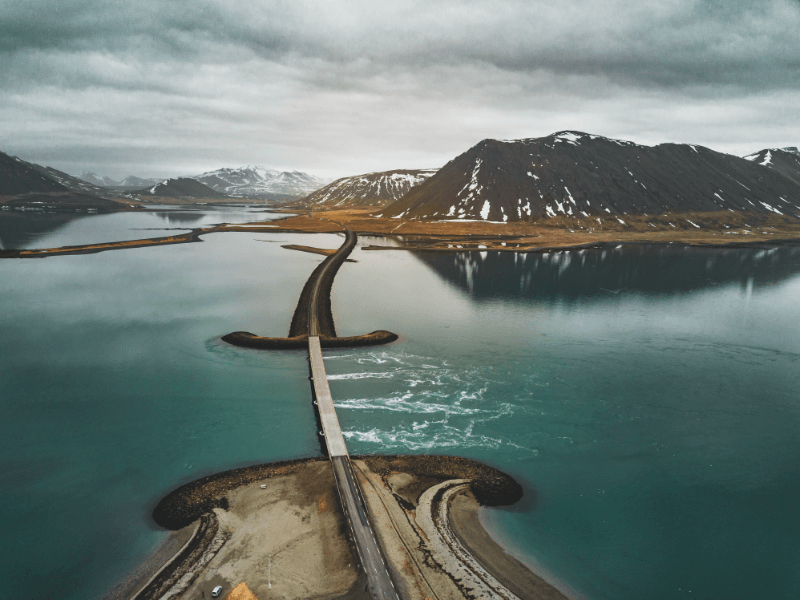
Bookings & Enquiries
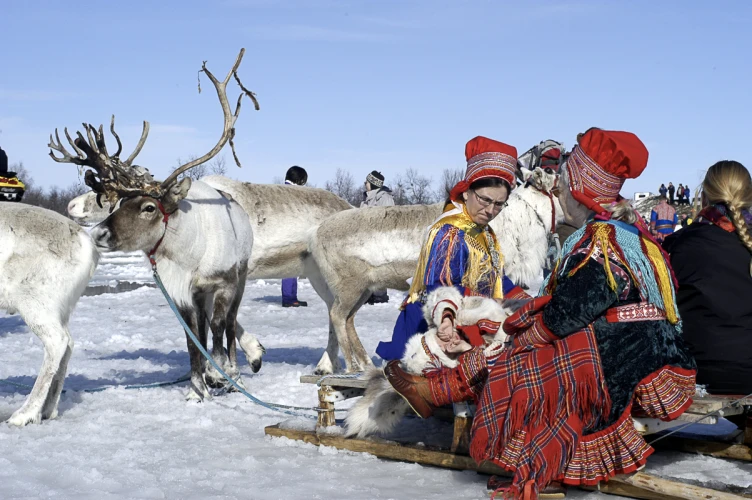
Experiential travel: Meeting indigenous Sámi people in the Nordics

Meeting indigenous Sàmi people in Norway, Sweden and Finland is at the heart of meaningful, authentic and experience-rich travel. Take a look at some of our suggestions for how and where to meet and learn more about the only indigenous people of the European Union.
Although coronavirus has accelerated the trend towards experiential travel, it was already gaining huge popularity prior to the pandemic. For a long time now, more and more travellers have been shying away from mass tourism and towards something more authentic, with a real connection to a place and its history, culture, and people.
In the Nordic region, one of the most interesting and unique cultures is that of the Sámi, the indigenous peoples of the northernmost parts of Norway, Sweden, Finland and the Kola Peninsula in Russia. The total Sami population is approximately 80,000 with nearly half living in northern Norway. The Sámi people speak a number of related languages that belong to the Uralic linguistic group along with languages such as Finnish, Estonian and Hungarian. However, most Sámi are bilingual, and sadly many have lost the ability to speak their native tongue.
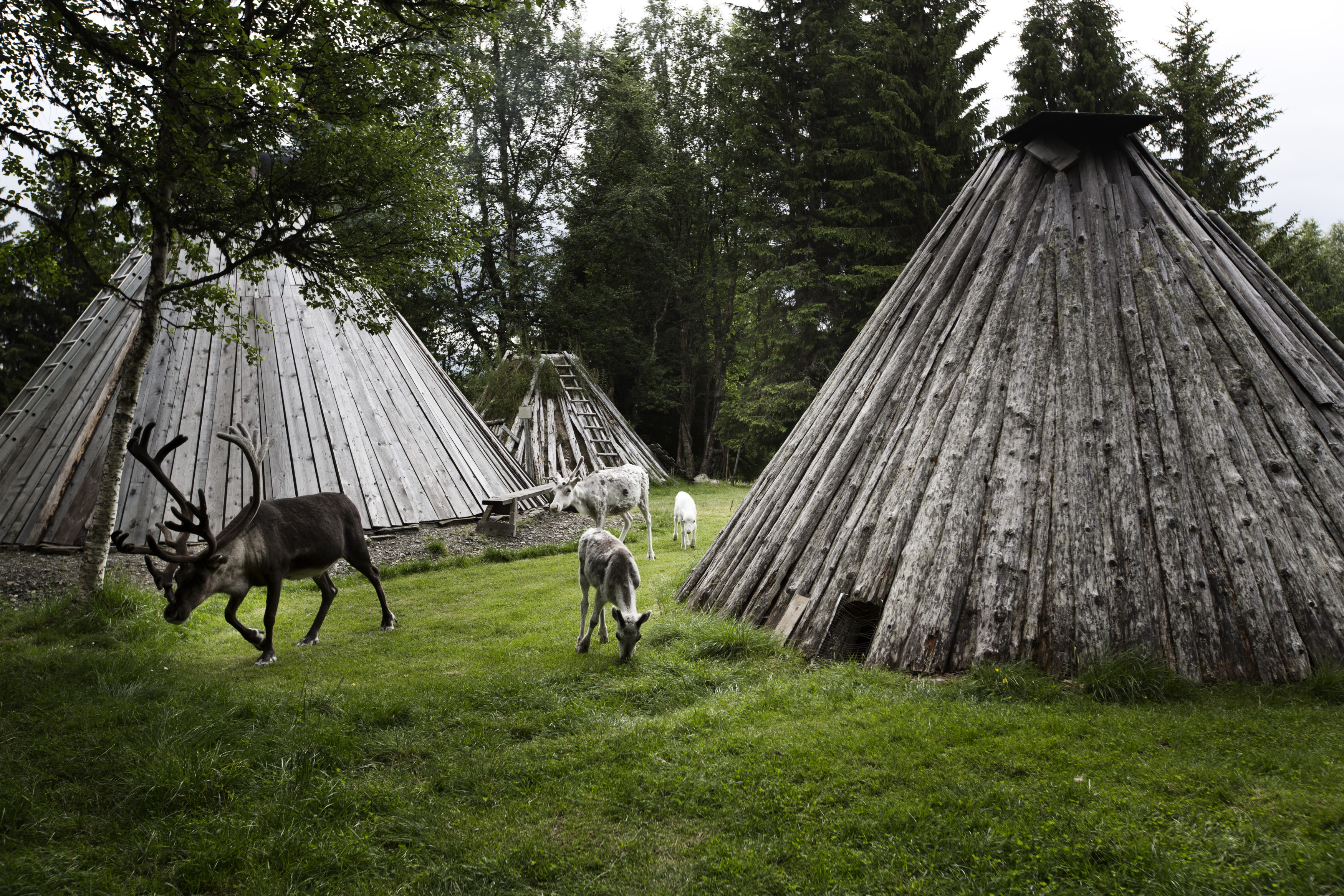
Living Sámi culture in Karasjok ja Kautokeino, Norway
The town of Karasjok is one obvious choice for anyone interested in meeting and learning about the Sámi people in Norway. It is the Sámi capital in Norway and coincidentally also the birthplace of 50 Degrees North’s CEO and Co-Founder, Tietse Stelma! In this town of 3000 inhabitants and 60,000 reindeer, nine out of ten people are Sámi. The Sámi parliament is in Karasjok, and this eye-catching building is shaped as a lavvu – a Sámi tent – which symbolises their traditionally nomadic culture.
While in Karasjok, visiting the Sápmi Culture Park is a great way to experience the Sámi way of life. You can meet local Sámi people in colourful, traditional costumes, try Sámi cuisine by the open fire, and hear the “joik” (traditional Sámi songs), one of Europe’s oldest surviving music traditions.
Visiting the area at Easter time is a great idea since it also gives travellers the opportunity to visit the Sámi Easter Festival in Kautokeino , 128km south-west of Karasjok. The Easter Festival is another focal point of Sámi culture in Norway. It includes numerous events and competitions, such as the World Championships in Reindeer Racing, the World Championships in Lassoing, the Sámi Grand Prix (a music competition termed as the “Sámi Eurovision”) and an impressive concert programme throughout the Easter week. This is a rare opportunity to experience a great deal of Sámi culture in a very short period of time.
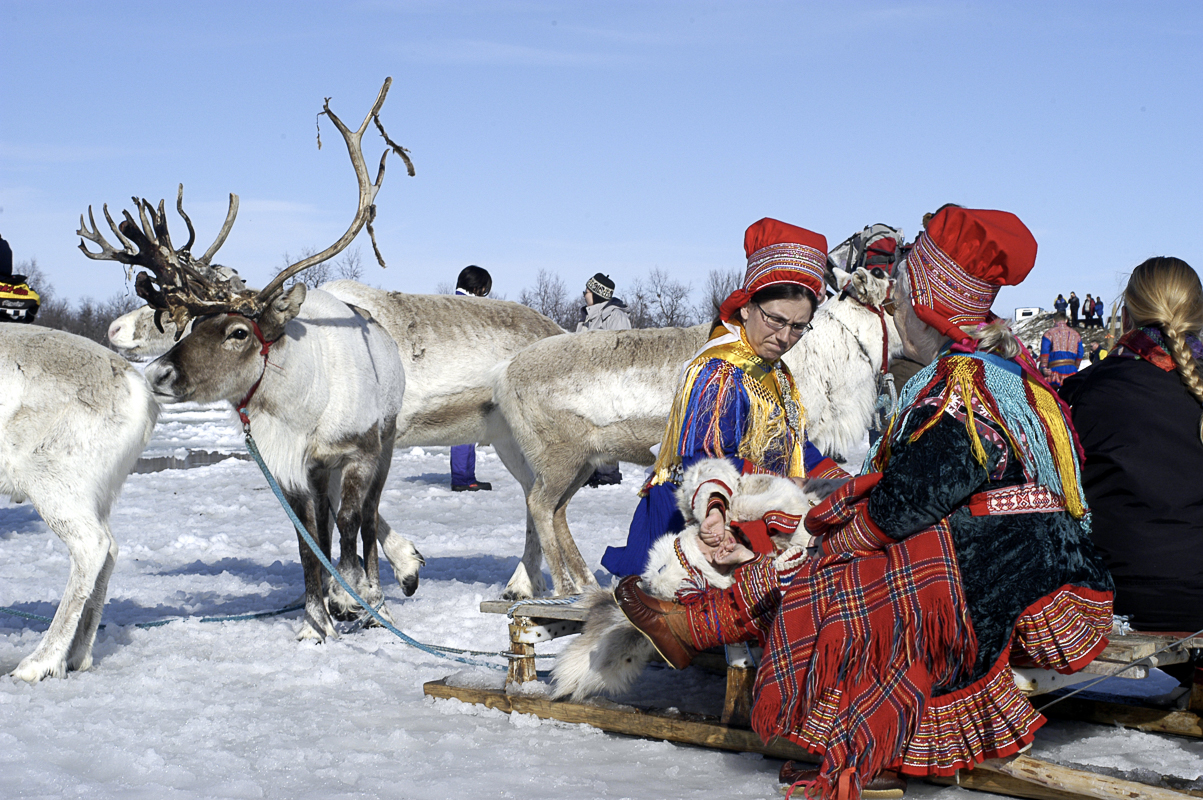
Sámi experiences at Sorrisniva, Norway
On the banks of the Alta River in far northern Norway lies Sorrisniva , an award-winning nature-based adventure and food business that is open all year round. They have Europe’s largest and the world’s northernmost ice hotel, excellent food, and activities such as accommodation in a Sámi tent (Lavvu), ice fishing, reindeer sleigh rides and other Sámi adventures. You can listen to the joik and learn from local Sámi guides who take you through some key aspects of Sámi history and culture, including reindeer husbandry. You can visit a Sámi family at Sorrisniva, for example, tailormade into one of our Northern Norway tours
Unforgettable Sámi events near Tromsø, Norway
The Sámi Week in Tromsø in February is an annual week-long celebration of Sámi culture with concerts, talks, language courses, lasso-throwing contests, reindeer racing, and a winter market with traditional food, drinks, and handicrafts. While the 6th of February, the official Sámi People’s Day, is celebrated as an official flag day in all four countries with Sámi populations, in Tromsø it has grown into a week-long festival that is well worth a visit.
Although 50 Degrees North has countless tours that include a visit to Tromsø, the 7-day tour Arctic Wilderness and Auroras combines Tromsø with the Vasara Reindeer Ranch in Kilpisjärvi, another place of interest if seeking to experience aspects of the Sámi culture.
On a slightly different note, the world renowned indigenous folk festival Riddu Riđđu Festivàla is held every July in Manndalen, a 2-hour drive east of Tromsø. This family-friendly festival celebrates its 30th anniversary in 2021 and continues to attract musicians from all over Sápmi (the cultural region traditionally inhabited by the Sámi people) as well other indigenous peoples and visitors from all over the world. Immerse yourself in concerts, films, courses and seminars in indigenous history and culture at Riddu Riđđu.
If looking for a more upmarket base from where to do a lovely day trip to the festival, see for example our 7-day summer tour Tromsø & Lyngen Alps.
Authentic and unique Sapmi Nature Camp, Sweden
Moving across the border to Sweden, our first recommendation is the lovely Sapmi Nature Camp . Founded by the Sámi entrepreneur Lennart Pittja and located in Unesco’s world heritage area Laponia, the Sapmi Nature Camp offers small-scale, sustainable Sámi glamping and wildlife experiences. In 2019, the Swedish Nature and Ecotourism Association awarded the Sapmi Nature Camp an ecotourism prize for their authentic, sustainable, and locally based operations. They characterised the camp as a genuine Sámi experience where you take part in the Arctic everyday life for Sweden’s indigenous Sámi people. Fishing, reindeer herding, food preparation and cooking are all intertwined and framed by storytelling, the northern lights, and experiences in nature.
Located outside Gällivare and Jokkmokk, this is a destination and experience that is easily added to any of our tours featuring the ICEHOTEL or the Treehotel – or both, as is the case with our 6-day tour Aurora Safari in Swedish Lapland.
Sapmi Experience with the Arctic Bath, Sweden
The Arctic Bath is a new design hotel located in Harads, in the heart of Swedish Lapland. Although mostly known for its unique architecture and floating sauna in the Lule River, it also offers a wonderful Sámi experience. This takes place just outside of Jokkmokk, close to the Arctic circle, where you will meet a young, local Sámi woman whose family are reindeer herders. Sitting in a lavvu (Sámi tent), you can enjoy the warm fire while listening to her stories and joik (traditional Sámi singing). A three-course meal is prepared over an open fire, with locally sourced ingredients, and you will also get close to reindeer while feeding them.
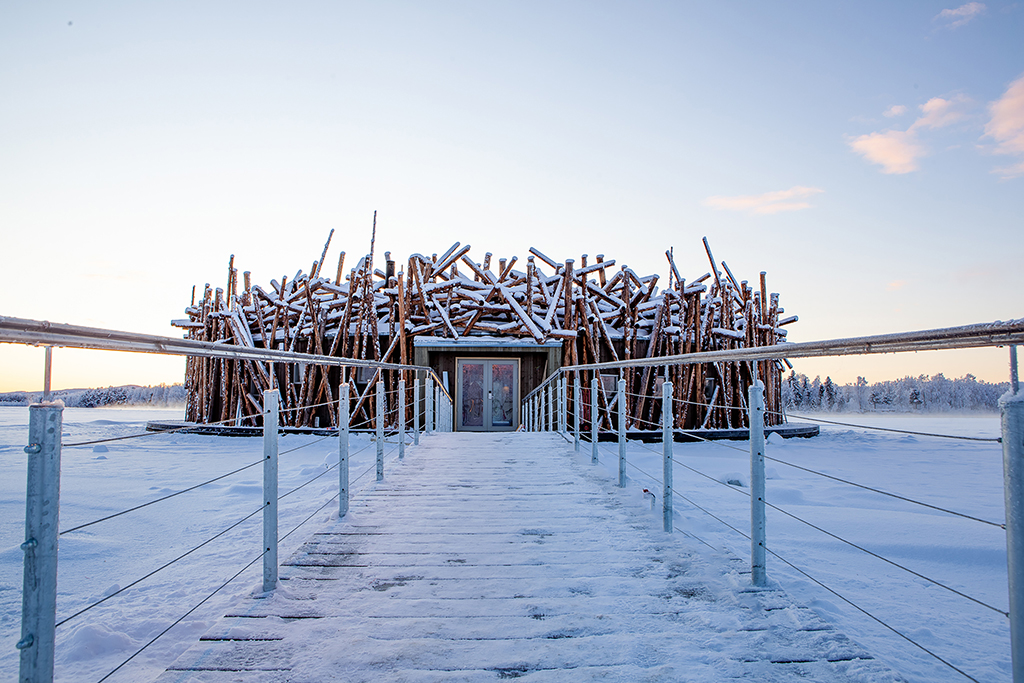
The Jokkmokk Winter Market in Sweden
Since 1605, Jokkmokk’s Winter Market has been an annual event that begins in the first week of February. While it attracts thousands of visitors from around the world, the market has an exceptional position as a key meeting place for Sámi people across the entire Sápmi region. It is also a key event for cultural and creative industries in the northern parts of Norway, Sweden, Finland and Russia and includes a multitude of events, such as parades, lectures, food-tasting sessions, dances, Sámi joik concerts as well as art and handicraft exhibitions. In many ways, the market is an annual party where Sámi traders network and catch up with old friends. It is also a great opportunity to explore different aspects of Sámi culture.
A visit to the Jokkmokk Market is easily combined with a stay at the Sapmi Nature Camp or the Treehotel, both of which are just an hour away from the market (although in different directions). It is popular with limited accommodation options so plan early for this event.
Nutti Sámi Siida, Sweden
Last but not least for Sweden, the Nutti Sámi Siida is a Sámi 'camp' in Swedish Lapland that offers Sámi eco adventures led by local Sámi guides. You can hand-feed their reindeer, go reindeer sledding, taste traditional Sámi food, visit exhibitions and explore Sámi arts and crafts. Best of all, you can combine this with a visit or stay at the enchanting, world-famous ICEHOTEL which is only 1.1km away.
In fact, the already mentioned 6-day tour Aurora Safari in Swedish Lapland could easily be modified and lengthened to include every one of our suggestions in Sweden, travelling from the Treehotel to the Arctic Bath, then Jokkmokk Market, Sapmi Nature Camp, and finally the ICEHOTEL with a visit to the Nutti Sámi Siida – a total of 300km adding up to the ultimate Sámi tour of Swedish Lapland.

Visiting Inari, the heart of the Sámi culture in Finland
In Finland, the village of Inari hosts the autonomous Sámi parliament and can be considered as the heart of the Sámi homeland. Inari is also the home of the Sámi Museum Siida which is an internationally acclaimed indoor and outdoor museum where you can familiarise yourself with changing exhibitions on Sámi culture, history, art, and nature throughout the year.
If you’re in the region in late January, you can also join the celebrations that mark the end of the polar night by going to the annual Skábmagovat Film Festival which is dedicated to indigenous peoples’ films from all over the world. This is a fantastic opportunity to learn more about the Sámi as films are a powerful way to communicate feelings, worldviews, attitudes, challenges and information in general. Also, in addition to films, the event includes workshops, discussions and concerts, and it is a natural meeting place for different cultures, both indigenous and non-indigenous.
Visiting the area during the Sámi National Day celebrations on February 6th provides another unique opportunity to observe numerous Sámi presentations and performances. In contrast, a summer trip in mid-August allows you to visit the music festival Ijahis idja , meaning Nightless Night. The festival celebrates the music of indigenous peoples and is the only music festival in Finland that focuses on Sámi music.
50 Degrees North offers countless pre-existing and tailor-made tours and travel packages to the Inari region and many of them include Sámi experiences and activities. See, for example, our 5-day Midnight Sun in Lapland Tour or the 4-day itinerary Autumn Colours & Aurora Borealis . Many other tours, such as the Lapland Arctic Highlights , can also be modified to include a variety Sámi experiences.
Authentic Sámi experience at the Reindeer Ranch, Finland
Finally, in Kilpisjärvi, in the northwesternmost corner of Finland, lies the Vasara Reindeer Ranch . The traditional Sámi lifestyle of reindeer herding is still very much alive here and gives travellers an unparalleled opportunity to mix authenticity with luxury: A stay here allows you to get up close and personal with the life of a 12th generation Sámi reindeer herder while spending your nights in a luxurious glass igloo or log chalet.
You can stay here, for example, during our 7-day tour Arctic Wilderness and Auroras, which also includes a winter visit to Tromsø in Norway.
Image credits: Anders Blomqvist, Jørn Tomter, Tina Stafrén/imagebank.sweden.se, Ørjan Marakatt Bertelsen, Visit Sweden, Visit Norway and Visit Finland.

Sami culture and reindeer at Arctic Circle
Swedish Lapland
SAMI CULTURE
This experience is for those who prefer to absorb themselves deeper into the traditional Sami culture. Between 75.000 to 100.000 Sámi people live in the Arctic regions of Norway, Finland, Sweden and Russia. Since prehistoric times the Sámi people of Arctic Europe have lived and worked in these areas. They have followed their reindeers to different seasonal grazing areas for thousand of years.
Arctic Circle
By the Arctic Circle monument close to Jokkmokk, you will meet your Sámi guide and together you will continue to their winter camp. During the tour you will learn more about the indigenous Sami people, living an Arctic lifestyle based on reindeer herding. As a visitor you can here spend a couple of relaxing hours for all your senses. Listen to the the sparkling fire while you enjoy delicious traditional Sámi food and hot steaming coffee prepared over the fire. A genuine gathering around the fireplace in the lávvu (tent house) where you will learn about the Sami culture, history and its position in modern society.
Sami culture and reindeer
In the Sami culture, one year has eight seasons. All seasons are closely linked to the reindeer natural migration. Listen to joik, the traditional Sámi way to musically tell a story and to remember the old ways. As an art form, each joik is meant to reflect or evoke a person, animal, or place. In the coral the reindeer will meet you curiously and you will be able to feed them and get really close. A truly unique experience!

December – March
2-8 persons, bigger groups on request
Close to Jokkmokk and Arctic Circle (150km from Luleå) Transfer time about 2.5 hours one way.
On request, contact us for availability and price
Sámi guide Traditional lunch in the lávvu (tent house) Listen to traditional music (joik) Meet and feed reindeer Story telling Stop at Arctic Circle
Other popular winter activities

Dog sledding

Snowmobiling

Northern Lights

Snowshoe walking
Luleå Travel organises both winter and summer activities in Luleå – Swedish Lapland; dog sledding tours Luleå, snowmobile tours Luleå, hovercraft tours , kayaking , forest hikes , guided tours Luleå – Gammelstad , ice skating Luleå, cross-country skiing Luleå, fatbiking , ice fishing , icebreaker tours , snowshoe walking , horse riding , northern light tours , Sámi culture experiences and much more activities to choose from in Luleå -Swedish Lapland.
More Information
- Terms & Conditions
- Travel guarantees
Guest reviews
Nature’s best.

Latest news
- Top 5 most popular winter activities in Luleå, Swedish Lapland
- Ice Bathing, a fun and freezing adventure
- Northern Lights – Autumn Equinox
- TripAdvisor Travelers Choice 2023
- Kiruna Aurora Dreams
Sign up and stay updated
OHTSEDIDH – Sami Cultural Expressions in Central Sweden
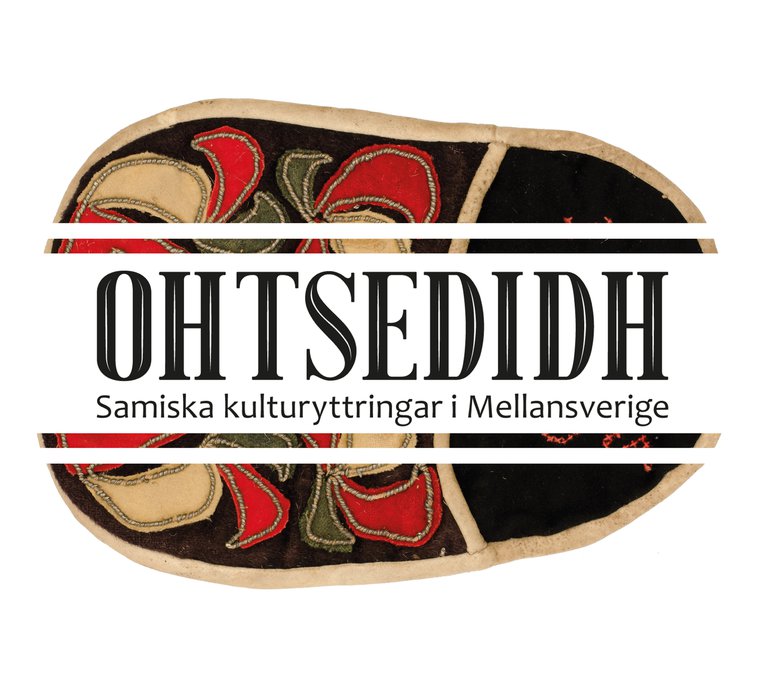
A traveling exhibition about Sami history and cultural heritage in Central Sweden. There is not just one Sami history, but many. The word Ohtsedidh is Southern Sami and means to seek or search for something. OHTSEDIDH is produced by Dalarna Museum, County Museum of Gävleborg, Västmanland County Museum, and Gaaltije Foundation, a Southern Sami cultural center. The exhibition is part of a research project.
Historiska museet/The Swedish History Museum
Narvavägen 13-17

An Indigenous land claim with parallels to Canada could redraw Norway's map
N orway's Supreme Court is deliberating on a case that could grant local control over a vast area in the country's far north — and set a groundbreaking precedent for Indigenous land rights in Europe.
The case will determine whether the largely Indigenous Sámi municipality of Karasjok will get collective ownership over its roughly 5,450 square kilometres of land — the second-largest municipal area in Norway and one of the most productive in terms of natural resources.
The Sámi are Europe's only formally recognized Indigenous group, with traditional territories spanning the national borders of Finland, Norway, Sweden and Russia. Across traditional territories in four Arctic nations , Sámi communities are already engaged in high-profile conflicts over land as the appetite for industrial projects on their territories appears to be ever-rising.
Within the northern coastal area known today as Finnmark, a county roughly the size of Nova Scotia, decisions about land are currently made by a private company, jointly managed by Sámi and a local public government. If the court decides for Karasjok, the community will achieve direct, local control over development decisions in their territory — and call the future of the existing system into doubt.
The case has already proven deeply divisive, with warring op-eds claiming a victory for Karasjok, which has a population of around 2,500 in an area roughly the size of the Greater Toronto Area, would turn neighbour against neighbour and even compromise national security .
But experts say the case parallels those in Canada that launched the modern Indigenous land claim process, and could have further implications for Indigenous land rights in Norway and across Europe.
"It might be all of Finnmark by the end," said Oyvind Ravna, a professor of law at the Arctic University of Norway in Tromsø. "You don't have to go far back in time to see that all of Finnmark, apart from the main towns, is Sámi land."
Contested history
At issue in Karasjok is whether the Kingdom of Norway ever established legal title over the lands of Finnmark, which formed a part of the heartland of the Sámi people long before the country took control of the area in the early 18th century.
For millennia, the Indigenous Sámi people have hunted, fished and herded reindeer across a broad swath of Arctic territory from modern day Russia to Norway. But whether the Sámi can claim legal ownership of their traditional territory hinges on much more recent history.
The area known today as Finnmark, where Norway's coastline curves toward Russia, has only been claimed by Norway since it was transferred from Sweden in 1751. Even then, it is not clear from records whether the Norwegian state expected actual ownership rights or simply an extension of the king's sovereignty. No treaties were ever signed with the Sámi, Ravna notes, and the first mention of "state land" in a law does not occur until 1848.
Still, for centuries, Norwegians carried out programs of forced assimilation aimed at the Sámi, suppressing languages and customs and denying many of them property rights in their own lands. That history, experts say, has long muddied the waters of identity and ownership in Finnmark.
"The history of land ownership in Norway is very similar to other Indigenous peoples' areas," said Rune Fjellheim, a Sámi politician from Karasjok who helped convene the local parties to the case.
"You meet a people that you first of all don't recognize as as good as you, and you disregard their legal system, established practices and ownership traditions and, in that sense, fundamentally disregard their right to the resources in the area."
Background to the case
In the 1990s, after decades of Sámi advocacy, Norway began negotiating with the newly created Sámi Parliament — a democratically elected Sámi assembly that deals with all matters concerning the Sámi people in Norway — to address calls for land rights and self-government in compliance with international law.
In 2006, that resulted in the Finnmark Act, which created a company called the Finmark Estate to manage the lands of the North. Management of the company would be split evenly between appointees of Norway's Finnmark County, a public government, and those appointed by the Sámi Parliament.
But fearing that Norway would treat the Finnmark Act as "the end of the rights discussion," Fjellheim said, Sámi negotiators also pushed for the creation of another body, the Finnmark Commission, that would "thoroughly investigate all historical claims … to the ownership of various areas of Finnmark."
In 2019, that commission found , by a narrow majority, that the largely Sámi Municipality of Karasjok had never ceded title to a territory comprising more than 5,000 square kilometres, representing over 10 per cent of FeFo's lands and millions of dollars in annual income.
FeFo's board initially accepted the findings when it was chaired by a Sámi member. But when the chairmanship passed to a Finnmark County appointee in 2020, it changed direction and decided to challenge the finding in court.
That lower court found for the Municipality of Karasjok by another narrow majority, concluding that the Indigenous municipality owns the land, and sending shockwaves through the communities of Finnmark's northern coast.
What's at stake
Currently under the Finnmark Act, any resident has equal rights to hunting, fishing and foresting across the entire territory. Karasjok remains a popular destination for moose and grouse hunting and is home to a third of Finnmark's most productive forests.
The decision prompted fears that Karasjok would withdraw those rights for residents of Finnmark's mostly non-Indigenous coastal communities. In another split decision, FeFo's board decided to appeal the case to the Supreme Court.
"We believe that the Sami people and other Finnmarkings have jointly used the whole of Finnmark," a page on FeFo's company website explaining the appeal reads. "The Finnmark Commission divides this community without there being a historical basis for it."
Echoes of Canada's land claim process
For Aaron John Spitzer, an associate professor in comparative politics at Norway's University of Bergen, the case now before Norway's Supreme Court brings up many of the same questions about the land claims of colonial powers that were at the heart of Canada's 1973 Calder case .
That case saw Nisga'a First Nation in B.C. argue that it had never ceded title to its territory. Though the case was thrown out on a technicality, the Supreme Court's findings prompted the federal government to set in motion the modern land claims process.
"This will be the first time in Norway where any substantial area of land is going to be subjected to the same kind of question," Spitzer said. "Is there such a thing as collective Indigenous ownership of a piece of territory, or did that somehow go away?"
If the case is decided for Karasjok, it is likely that several other municipalities in the Sámi heartland will launch similar claims for local control. "This is an area of about 20,000 square kilometres," Spitzer said, "as big as Slovenia or Israel — so, a small state."
There is no clear indication yet what that collective ownership will look like. FeFo has so far ruled out continuing to manage the land on their behalf. It's possible, Spitzer says, that the Sámi regions could join together to create their own management board, ruling on fishing, harvesting and development rights across a large swath of Inner Finnmark.
If that happens, FeFo will lose much of its most valuable territory, and perhaps even its reason for being. But if FeFo wins, Spitzer said, the Finnmark Commission — the body demanded by Sámi negotiators and charged with settling the land claims process — "will have been effectively neutered." That may call the legitimacy of the Finnmark Act into question — and plunge the country once again into negotiations between the government and Sámi Parliament.
"In some sense you have two pieces of the Finnmark Act fighting against one another," he said. "One of them is going to fail."
To rule on the case, the Supreme Court has expanded its panel of judges to 11 members from the usual five. With more than 20,000 pages of material to review, there is no clear timeline for a decision, though it is expected to come before the end of the summer.


IMAGES
VIDEO
COMMENTS
At one with nature, the Sámi people inhabit parts of Sweden, Norway, Finland and Russia - a borderless region known as Sápmi, the land of the Sámi. Although many in the Swedish Sámi community live in Swedish Lapland - a vast area stretching from Sorsele and Skellefteå in the northern province of Västerbotten, right to the country's ...
We travel from Sweden's northernmost Sami village, Könkämä, down through the forests towards the coast. From the more nomadic reindeer herding in the mountains - where the migration route between summer and winter grazing is longer - through the forested area where more stationary reindeer herding prevails, to Sami villages based on a ...
There is no census for the Sami, but the population is estimated at around 80,000 people, spread over four countries with at least 20,000 in Sweden, 50,000 in Norway, 8,000 in Finland and 2,000 in Russia. The Sami are one of the world's indigenous peoples and one of Sweden's official national minorities. The minority status means - in short ...
You can buy Sámi arts and crafts in the towns and villages of Swedish Lapland and other parts of northern Sweden. If you're visiting Kiruna, the largest city in Lapland, head for the Carl Wennberg shop, which has been selling Sámi arts and crafts here since 1907. Further down the country, in the northern town of Vilhelmina, you'll find ...
Swedish Lapland - a culture-rich natural wonderland. A visit to Swedish Lapland will open up a unique world, combining vast expanses of nature, authentic Sámi culture and culinary specialities. Depending on which season you come, you'll have completely different experiences - but all of them will be memorable. Last updated 14 July 2023.
If you travel through Sápmi or Swedish Lapland, ... There are approximately 250 000-280 000 reindeers in Sweden, varying from year to year. Both male and female reindeer grow antlers, which are shed once a year. ... provides a deeper understanding of the Sami culture and an insight into the traditional way of life. Nutti Sámi Siida.
Throughout Kiruna you will find many unique examples of Sami arts and crafts such as the Jukkasjärvi Church organ, decorated with reindeer antler and Sámi motifs.Visiting the region, you can experience and learn more about the Sámi culture through the Sámi companies and guides who work in the tourist industry. The Indigenous Peoples of the ...
Experience Sápmi at the Márkanbáiki Open Air Museum. Márkanbáiki is an easily accessible excursion destination in Jukkasjärvi for visitors from near and far who want to experience Sápmi with all their senses. Get up close to reindeer, stroll through the museum's exhibits and enjoy traditional Sami flavors with a modern twist at Café Sápmi.
The traditional Sámi cultural region is called Sápmi, an area which covers a large part of Northern Sweden, Northern Norway, Northern Finland and the Kola Peninsula of Russia. Approximately 20 000-40 000 Sámi live in Sweden today. The Sámi have their own culture, languages and livelihoods which differs from the majority populations of these ...
1. Sweden. Watch reindeers race at the 400-year-old Jokkmokk handicraft market, go husky dog-sledding through spruce forest, snowmobiling on frozen rivers and take a moose-spotting safari on a ...
The Sámi (/ ˈ s ɑː m i / SAH-mee; also spelled Sami or Saami) are the traditionally Sámi-speaking peoples inhabiting the region of Sápmi, which today encompasses large northern parts of Norway, Sweden, Finland, and of the Kola Peninsula in Russia.The region of Sápmi was formerly known as Lapland, and the Sámi have historically been known in English as Lapps or Laplanders, but these ...
From our conversations with Trollvik and Pittja, we determined the nine best ways for travelers to experience and learn more about Sámi culture in Arctic Europe. 1. Book a stay with a Sámi-run tourism operation. Photo: Sapmi Nature /Facebook. Stay at Sámi-run Sápmi Nature Camp in Nábrreloukta, Sweden.
The Sami Museum is traditional and contemporary. The museum, by local expression called Ájttes geographic area of operation covers the entire mountain region and the traditional Saami settlement area from the border to the west and down into the forestland, 1000 km from south to north. Ájtte tells of a man in his environment of nature and ...
Discover Sami culture. Idre in northern Dalarna is home to Sweden's most southern Sami village. Here the reindeer graze freely on the mountain slopes and in the forests. This is a wonderful place to experience Sami culture up close. The Andersson family, one of four Sami families in Idre Sameby, runs Renbiten enterprise which combines ...
You can enjoy this activity as part of the suggested tours below, or we can weave it into a trip shaped entirely around you. slide 1 to 3 of 4. Speak to a certified Sweden specialist to start planning your vacation... Call one of our experts or arrange a video appointment for ideas and advice. 617-223-4117.
In Jukkasjärvi you can visit the world-famous Icehotel. From Nikkaluokta you can hike to Sweden's highest mountain Kebnekaise. The countryside outside Kiruna is magnificent and still largely untouched. Lapland is the home of the Sami people, the reindeer people.
Sami experience and reindeer. Discover Sweden's traditional Sami culture and learn more about their way of living. The Sami are one of the world's indigenous people with their own language, culture and lifestyle, with close connection to nature and the reindeer. ... then this is the visit for you. For 1 hour the focus will be completely on ...
EXPERIENTIAL TRAVEL IN SWEDEN WITH BLUE PARALLEL. On your luxury tour of Swedish Lapland with Blue Parallel, you will pass through Jokkmokk. Jokkmokk, a small town with a population less than 3,000, is one of the central hubs of the Sami community in Sweden. Three miles north of the Arctic Circle, this winter wonderland of a town is even snow ...
Márkanbáiki - Sámi open-air museum: Marknadsvägen 2, Jukkasjärvi, Sweden Reindeer Lodge: Paksuniemivägen 188, Jukkasjärvi, Sweden. Reindeer, Sámi culture and food in Jukkasjarvi, Kiruna, Swedish Lapland. Go reindeer sledding, taste local food and get impressed by Sámi arts and crafts.We offer everything from activities and museum, to ...
Located in Jokkmokk, the Ájtte Museum provides a deep dive into Sámi culture, ecology, and history. Explore fascinating exhibitions, including Sámi art, tools, and traditional attire. The museum is open year-round, from 10 am to 5 pm, with adult admission at SEK 100, and free entry for those under 25 years. 2. Vilhelmina Norra Sameförening ...
It is the Sámi capital in Norway and coincidentally also the birthplace of 50 Degrees North's CEO and Co-Founder, Tietse Stelma! In this town of 3000 inhabitants and 60,000 reindeer, nine out of ten people are Sámi. The Sámi parliament is in Karasjok, and this eye-catching building is shaped as a lavvu - a Sámi tent - which symbolises ...
Sámi history. A Sámi family in Norway around 1900. The Sámi people (also Saami) are a Native people of northern Europe inhabiting Sápmi, which today encompasses northern parts of Sweden, Norway, Finland, and the Kola Peninsula of Russia. The traditional Sámi lifestyle, dominated by hunting, fishing and trading, was preserved until the Late ...
This experience is for those who prefer to absorb themselves deeper into the traditional Sami culture. Between 75.000 to 100.000 Sámi people live in the Arctic regions of Norway, Finland, Sweden and Russia. Since prehistoric times the Sámi people of Arctic Europe have lived and worked in these areas. They have followed their reindeers to ...
Calendar icon 4 May — 1 Sep 2024. A traveling exhibition about Sami history and cultural heritage in Central Sweden. There is not just one Sami history, but many. The word Ohtsedidh is Southern Sami and means to seek or search for something. OHTSEDIDH is produced by Dalarna Museum, County Museum of Gävleborg, Västmanland County Museum, and ...
A mine expansion in northern Sweden is seen as critical to those amibitons, but for indigenous Sámi who have been moved off their land it's a threat to an ancient way of life. Copper, lithium ...
A case before Norway's Supreme Court could see an area in the north of the country transferred to local, Indigenous control and would be the first time such a land claim succeeded in Europe. If it ...